
TANF TANF TANF TANF TANF TANF TANF TANF TANF TANF TANF TANF TANF
Division of Welfare and Supportive Services A-700
Eligibility and Payments Manual INCOME
15 May 01 MTL 01/15 Income
Income
700 INCOME
Income is any type of payment which is a gain or benefit to a household. When
determining eligibility, the type of income determines whether it is counted or exempt.
710 Requirement to Pursue Income
Income is considered available both when
actually available and when the individual
has a legal interest in the income and has
the ability to make the income available.
Therefore, the household must pursue and
take advantage of all income which is or
may be available for maintenance and
support. Allow the household ten (10)
working days to pursue income such as
Retirement, Survivor’s and Disability
Insurance (RSDI), Railroad Retirement
(RR), Veteran’s Administration (VA)
benefits, Unemployment Insurance
Benefits (UIB), Public Employee’s
Retirement benefits, etc. Inform the
household, in writing, of the obligation to
pursue and make the income available.
Benefits are denied or terminated if an
individual refuses to apply for, pursue and
accept income or provide proof of such by
the requested date or fails to provide
information essential to establish the
claim.

TANF TANF TANF TANF TANF TANF TANF TANF TANF TANF TANF TANF TANF
A-710 Division of Welfare and Supportive Services
INCOME Eligibility and Payments Manual
Requirement to Pursue Income 15 May 01 MTL 01/15
Exceptions:
● Individuals receiving SSI may not receive cash benefits.
● Individuals not requesting assistance, but whose income is used in determining
eligibility, are requested to pursue benefits; however, no negative action is taken
if they fail to cooperate.
● If it would be unreasonable for a household member to apply for or make income
available for maintenance and support, they may not be required to pursue the
income. The following situations, with supervisory approval, are unreasonable:
– The cost to pursue exceeds the potential income or causes financial
hardship.
– Pursuing the income would endanger the household member(s) health or
safety.
– Legal action is required but a private attorney or legal service refuses to
accept the case. A reasonable effort to obtain legal assistance must be
made and evidence provided.
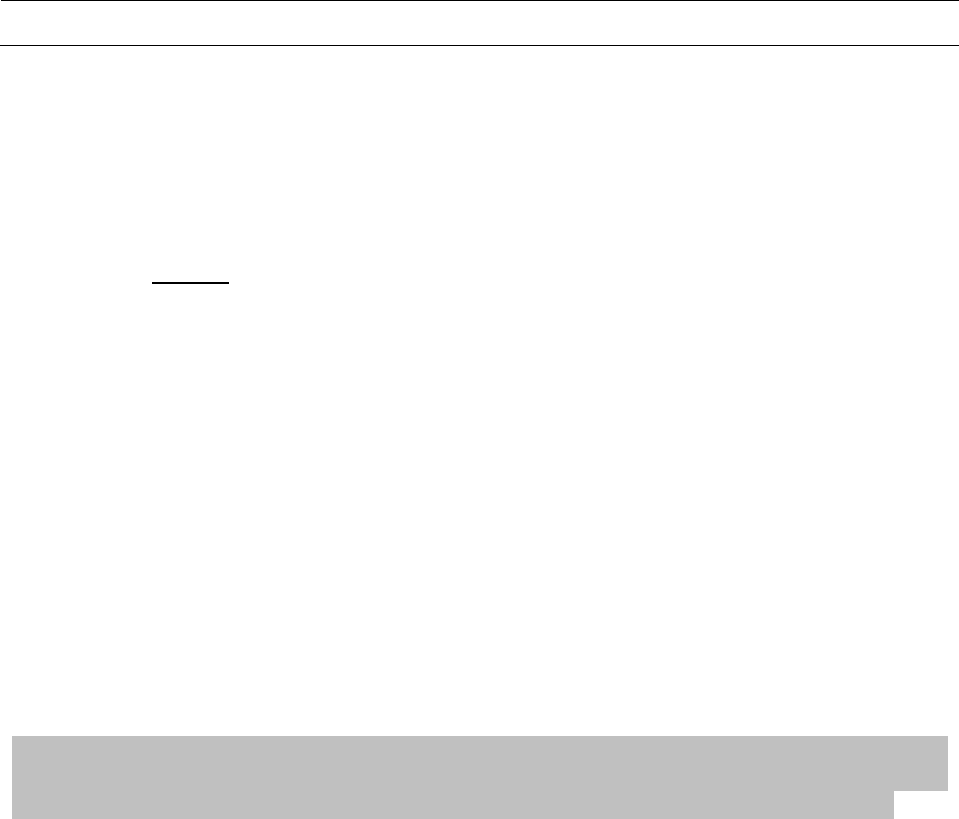
TANF TANF TANF TANF TANF TANF SNAP SNAP SNAP SNAP SNAP
Division of Welfare and Supportive Services A-711
Eligibility and Payments Manual INCOME
15 Nov 01 MTL 03/15 Earned Income
711 Earned Income
Earned income is CASH or INCOME IN KIND received through salary, self-employment
or tips; including wage advances, commissions, military pay, jury duty, on-the-job
training payments, honorarium payments and work assessment programs through
Vocational Rehabilitation. Wage advances are budgeted when received, and are
deducted when the employer deducts them from gross pay. When meals are included
in the gross taxable income, they are considered part of the earnings. Verification of
income is required. However, if verification is unavailable (the individual’s job would be
jeopardized, the employer refuses to cooperate, the business is closed, etc.), the
individual’s statement may be accepted. When this is done, the circumstances must be
documented.
Income earned in a foreign currency, such as Canadian dollars or Mexican pesos, must
be converted to U.S. dollars in order to know what the actual earned income is. Use the
exchange rate on the last day of the budget month, unless there is a dramatic change in
the foreign exchange rate impacting the amount of the earnings.
Count the gross amount of all wages (including meals when included in the taxable
gross income), salaries, and commissions as earned income. The gross figure cannot
be reduced by any deduction, voluntary or involuntary such as child support deductions,
child care deductions, insurance premiums, deductions for judgments, garnishments,
federal taxes, etc. Evaluate paycheck stubs for irregular income such as differential
shift pay, bonus pay, holiday pay, etc.
Note: Reimbursements or flat allowances, including reimbursements made to the
household for job or training related expenses such as travel, per diem, uniforms, and
transportation to and from the job or training site are excluded from earned income.
Exception: An Advanced EITC received with wages from an employer must be
deducted from gross earnings prior to the earned income deduction being applied.

TANF TANF TANF TANF TANF TANF SNAP SNAP SNAP SNAP SNAP
Division of Welfare and Supportive Services A-711
Eligibility and Payments Manual INCOME
15 May 01 MTL 01/15 Earned Income
The cash value of an in-kind benefit the
household receives in exchange for
performing work for the provider is
budgeted as earned income.
Budget wages of a required household
member who is temporarily absent (up to
90 days) from the home because of
employment as earned income.
Budget wages of an individual who is not
a required household member because
their absence will extend beyond 90
days who makes his/her wages available
to the household as unearned income.
Divide the amount received by the
absent member equally between
household members who have a
relationship of spouse/child of the absent
member.
Exception: Count payments as
unearned income if
● they are received from programs
that require individuals to work
without wages, e.g., Tribal Work
Experience Program - TWEP pay-
ments and
● they substitute for wages, or
● they are from a wage earner absent
from the household because of
employment, or
wages are made available to the
SNAP household by way of deposits
to a joint bank account by a non-
household member.

TANF TANF TANF TANF TANF TANF SNAP SNAP SNAP SNAP SNAP
A-711 Division of Welfare and Supportive Services
INCOME Eligibility and Payments Manual
Earned Income 15 May 01 MTL 01/15
If an individual asks his employer to hold their wages or the wages are being garnished,
count the deduction as income in the month the household would otherwise have been
paid. However, if an employer holds the employees' wages as a general practice, count
this money as available income in the month it is paid. Count advances in the month
they are received and deduct them from wages in the month the employer deducts
them.
Income related to employment entitles a household to deductions not allowed for
unearned income.
711.1 Flexible Fringe Benefits
Flexible fringe benefit plans allow the employee to choose from benefit components
such as insurance, extra vacation time, and payments to third parties for medical bills or
child care. These are also called "cafeteria plans."
Under some plans, employers withhold wages to pay for the benefits selected by the
employee.
Under other plans, employers offer benefit credit in addition to wages, which the
employee can use to purchase benefits. If the employee does not use all of the credit to
purchase benefits, some plans allow the excess to be paid to the employee as part of
his wages.
All wages and salaries must be counted as income. Gross wages must be budgeted
and any money deducted from the gross income and paid to a third party for taxes,
insurance or other fringe benefits are counted as income. Any amount reported on the
pay stub or elsewhere as taxable gross wages is countable.
Note: Do not include meals as earned income unless the meals are included in
the taxable gross. Some employers add the meals in the gross and then take
them out to gain a corporate/business tax advantage. In these situations, do not
include the meals as income in the gross income calculation.
712 Unearned Income
Income received without performing work-related activities. This includes benefits from
other programs.
When an individual receives and returns a check (e.g., UIB, RSDI, VA, etc.) to the
issuing agency, determine whether to budget the payment using the following
guidelines:
● If there is evidence the check was incorrectly paid and it is verified the check was
returned, do not budget the amount as income.
● If the check was correctly paid and was voluntarily returned, budget the amount
as income in the month received.

TANF TANF TANF TANF TANF TANF SNAP SNAP SNAP SNAP SNAP
Division of Welfare and Supportive Services A-712
Eligibility and Payments Manual INCOME
15 Nov 01 MTL 03/15 Unearned Income
Do not count RSDI, SSI, VA, or other such benefits which a member of the household is
entitled to receive if the benefits are paid to someone outside the household who
● receives the funds, and
● does not make the money available to the beneficiary.
If the payee provides a portion of the funds to the beneficiary, count the amount made
available in cash or by vendor payment as unearned income to the beneficiary's house-
hold. Any portion of the funds the payee keeps for their own use is budgeted as
unearned income to the payee's household.
If the income is not made available, the
household must follow the requirements
for pursuing legally obligated income.
720 TYPES OF INCOME
There are differences in countable and exempt income for the different programs.
When determining eligibility, count any income not specifically listed as exempt.
720.1 Alpha Listing of Types of Income and Income Status
The following alpha list of income types contains coding (Y, M, E and X) which identifies
the program, countability and type of income (earned/unearned). The manual location
is provided for quick reference to ensure an accurate evaluation of income is made for
budgeting purposes.
Coding Key:
Y = Countable
M = May Be Countable
E = Exempt
X = Income Type (earned or unearned)
TYPE
TANF
CASH
SNAP
EARNED
UNEARNED
MANUAL
SECTION
Adoption
Subsidies
M
Y
X
A-721
Agent Orange
E
E
A-728.2
Alimony
Y
Y
X
A-739
Blood Donations
E
E
A-766
Cash Gifts/
Contributions
Y
Y
X
A-724
Census Income
N
Y
X
A-737.11
Child Support
Y
Y
X
A-725
Collection of Cans
Y
Y
X
A-757
Children’s
Earnings
M
M
X
A-726
Contract/
Seasonal
Earnings
Y
Y
X
A-727

TANF TANF TANF TANF TANF TANF SNAP SNAP SNAP SNAP SNAP
A-720.1 Division of Welfare and Supportive Services
INCOME Eligibility and Payments Manual
Alpha Listings of Types of Income and Income Status 15 Nov 01 MTL 03/15
TYPE
TANF/
CASH
SNAP
EARNED
UNEARNED
MANUAL
SECTION
Crime Victim’s
Comp. Pay
E
E
E
A-737.1
Disability
Benefits
Y
Y
X
X
A-728
Dividends/
Royalties
Y
Y
X
A-731
Education
Assistance
M
M
X
X
A-733
EITC (Advance
Payments)/Federal
Tax Refund
E
E
A-732*
Energy Assistance
M
M
X
A-734
Flexible Fringe
Benefits
Y
M
X
A-711.1
Foster Care
Payments
M
M
X
A-735
Gambling Winnings
E
E
A-766
General Assistance/
Indian General
Assistance
M
M
X
A-759
Government
Disaster Payments
M
M
X
A-736.2
Government
Sponsored
Payments
M
M
X
X
A-736
Honorarium
Payments
Y
Y
X
A-711.3
In Kind Income
Y
E
X
A-737
In Home Family
Pres/SLA
M
M
X
A-736.5
Independent Living
Payments
E
Y
X
A-736.9
Interest
M
M
X
A-739
Jury Duty
E
E
A-766
Loans
E
E
A-743
Lump Sum
Payments
M
M
X
A-744
Migrant/Seasonal
Farm Workers
Emergency
Assistance
E
E
A-745
Military Pay/
Allowance
Y
Y
X
A-746
Minor Parent
Income
M
M
X
X
A-747
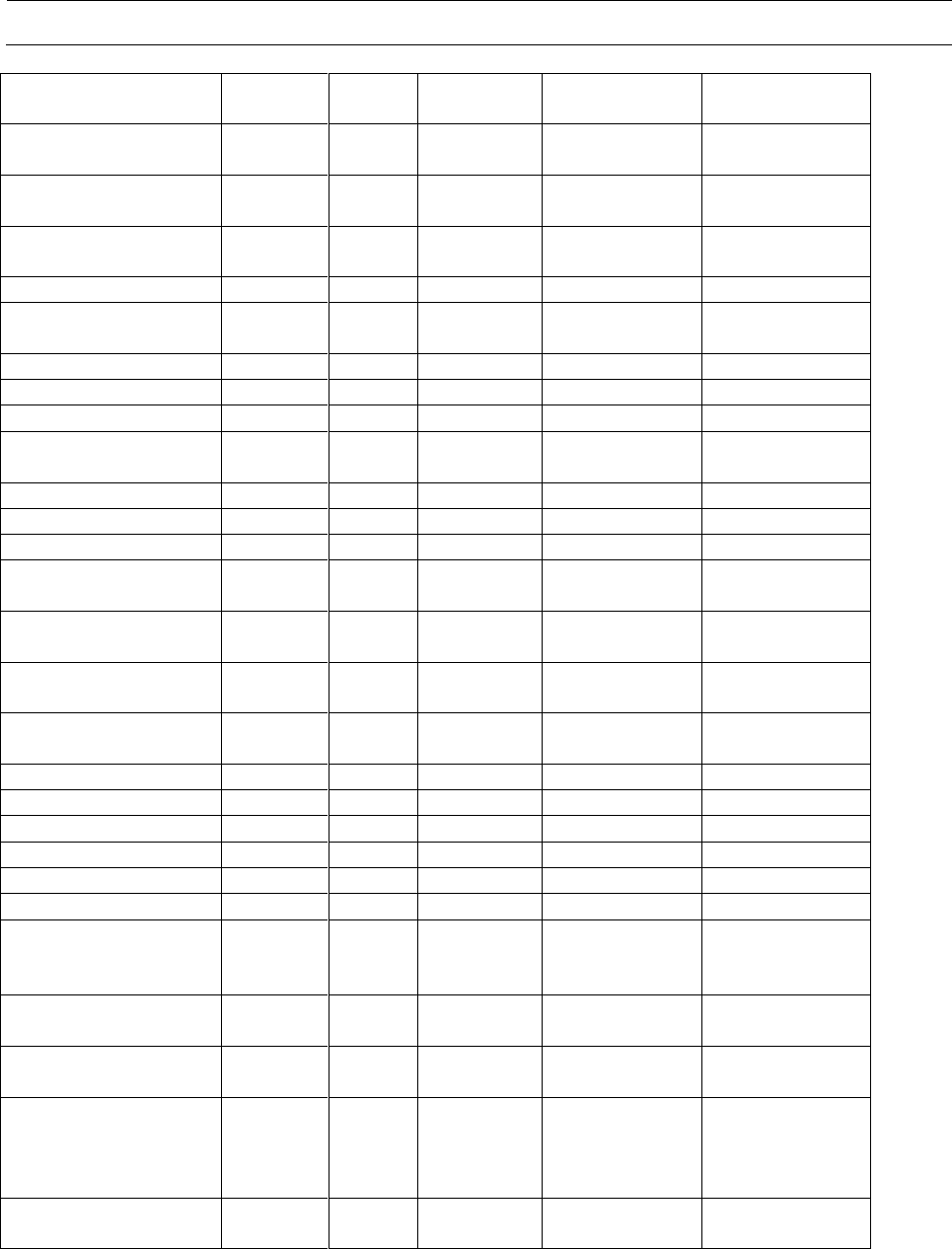
TANF TANF TANF TANF TANF TANF SNAP SNAP SNAP SNAP SNAP
Division of Welfare and Supportive Services A-720.1
Eligibility and Payments Manual INCOME
15 Nov 01 MTL 03/15 Alpha Listings of Types of Income and Income Status
TYPE
TANF/
CASH
SNAP
EARNED
UNEARNED
MANUAL
SECTION
National Comm.
Serv. Act
M
M
X
A-736.3
Native and
Indian Claims
M
M
X
A-736.4
Non-Citizen
Sponsor’s Income
M
M
X
X
A-670
A-723
Nutrition Programs
E
E
A-736.6
Out-of-State
Diversion Payment
Y
E
X
A-722
Panhandling
E
E
A-766
PASS
E
E
A-749
Pensions
Y
Y
X
A-751
Professional
Gambler
Y
Y
X
A-757
Property Income
Y
Y
X
X
A-757.4
Radiation Exposure
E
E
A-728.3
Reimbursements
M
M
X
A-753
Relocation
Assistance
E
E
A-736.7
Retroactive
Payments
M
M
X
X
A-744
Reverse Mortgage
Loans
E
E
A-743
A-538
Roomer/Boarder
Payments
Y
Y
X
A-757.5.1
RSDI
Y
Y
X
A-752
Self-Employment
Y
Y
X
A-757
SSI
E
Y
X
A-756
Strikers
Y
Y
X
A-758
Subsidized Housing
Y
M
X
A-736.8
TANF Benefits
M
Y
X
A-722
Temporary Ins. Dis
(EICON)/Workman’s
Compensation
Y
Y
X
X
A-741
Temporary and
Ongoing Assistance
M
Y
X
A-759
Third Party
Beneficiary
M
M
X
A-761
Transitional
Compensation for
Abused Family
Members (Military)
Y
Y
Y
A-728.5
Transitional Housing
for the Homeless
E
E
A-754
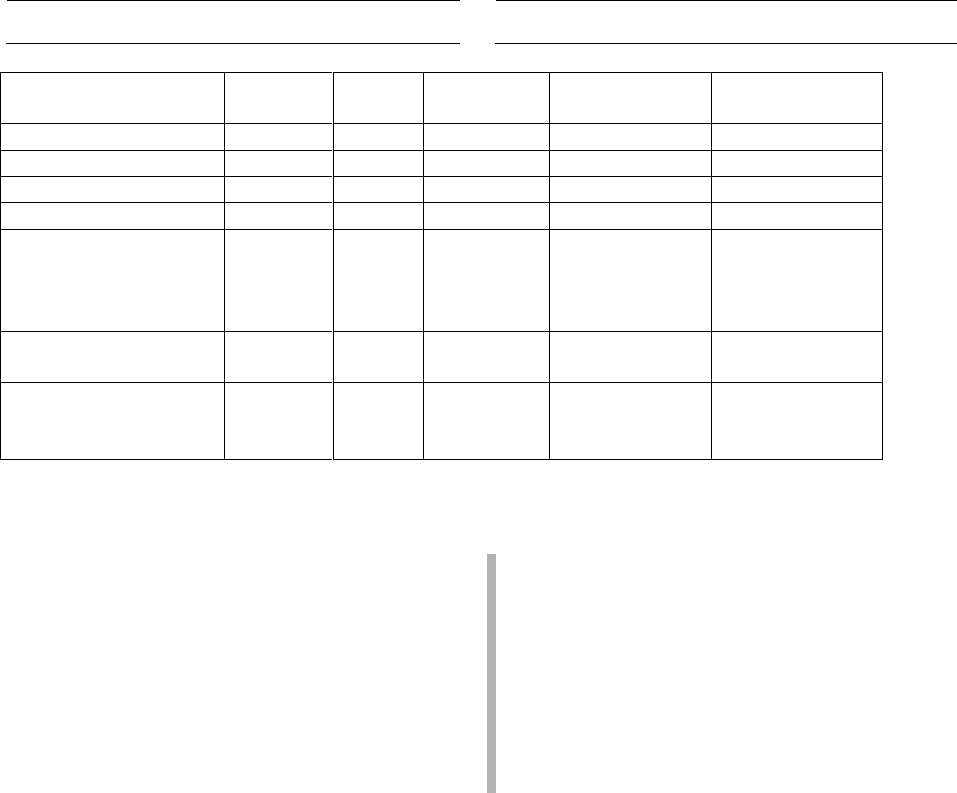
TANF TANF TANF TANF TANF TANF
SNAP SNAP SNAP SNAP SNAP SNAP
A-720.1 Division of Welfare and Supportive Services
INCOME Eligibility and Payments Manual
Alpha Listing of Types of Income and Income Status MTL 13/05 01 Nov 13
TYPE
TANF
CASH
SNAP
EARNED
UNEARNED
MANUAL
SECTION
Trust Funds
Y
Y
X
A-762
UIB
Y
Y
X
A-763
VA Benefits
Y
Y
X
A-765
Vendor Payments
E
M
X
A-764
Victims of Nazi
Persecution
(includes Holocaust
& Swiss payments)
E
E
A-748
Wages, Salaries,
Commissions
Y
Y
X
A-711
Workforce
Investment Act (WIA)
was known as JTPA
M
M
X
X
A-742
721 Adoption Subsidies
Do not count, UNLESS the child
receiving the subsidy is included in the
household.
Count as unearned income.
Exception: Exempt any portion of an
adoption subsidy intended for costs other
than normal living expenses. If the
subsidy is for both normal living expenses
and other costs, only the amount
separately identified by local DCFS staff
for other costs is exempt.

TANF TANF TANF TANF TANF TANF
SNAP SNAP SNAP SNAP SNAP SNAP
Division of Welfare and Supportive Services A-722
Eligibility and Payments Manual INCOME
15 May 01 MTL 01/15 TANF Benefits
722 TANF Benefits
Nevada TANF Benefit
NNRC and Kinship cash benefits
are not countable income to the
caretaker if they apply and have
their own separate cash case.
Out of State Benefit
Count the total amount as
unearned income. Inform the other
state of the change in residence if
the household does not have
verification of benefits having been
terminated.
Out-of-State Diversion Payment
If the household received an out-
of-state diversion payment, apply
the other state’s ineligible period.
Count the gross benefits, less any
overpayment collection, as unearned
income.
Exception:
Count the gross amount when
the overpayment is due to a
TANF intentional Program
Violation (IPV). When a TANF
benefit is reduced by an IPV
overpayment, the means-tested
income penalty is applied and the
income used for SNAP purposes is
the TANF benefit amount before
the reduction (e.g., benefit reduced
a pro rata share from $338 for IPV
by $128 for a net grant of $255.
The income penalty would result in
$383 being budgeted).
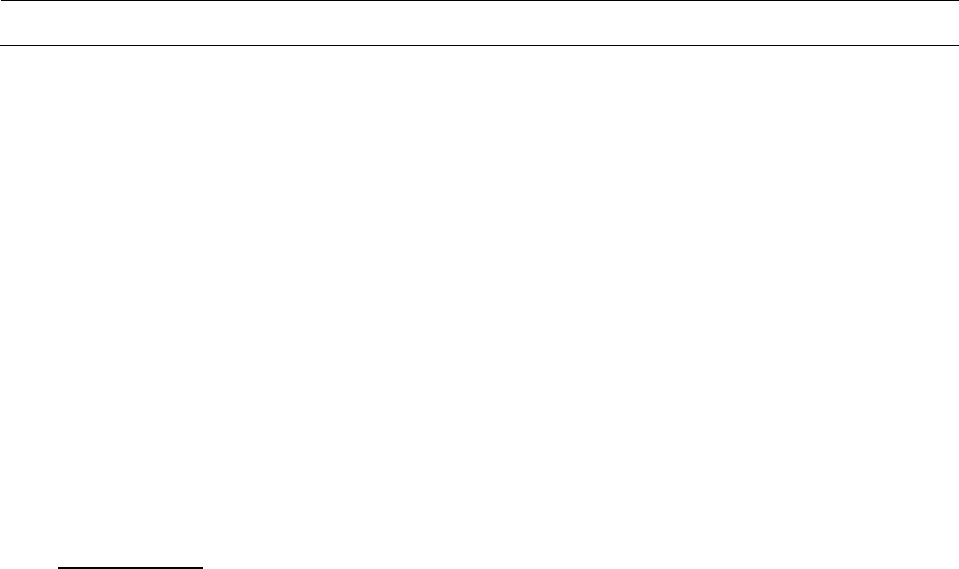
SNAP SNAP SNAP SNAP SNAP SNAP SNAP SNAP SNAP SNAP SNAP SNAP
A-722 Division of Welfare and Supportive Services
INCOME Eligibility and Payments Manual
TANF Benefits 15 May 01 MTL 01/15
If a non-qualified non-citizen (ineligible for SNAP participation) is included in the
TANF benefit and is sanctioned for non-cooperation with a TANF requirement,
the means-tested income penalty is not assigned to the non-qualified non-citizen
in the system because the system will automatically and incorrectly apply the
income proration. Assign the income to an eligible household member who is
receiving SNAP benefits. (e.g., spouse, child).
● TANF underpayments and supplemental payments are lump sum payments and
counted as a resource except when the payment covers a portion of an issuance
month not yet paid and the underpayment will be received during the issuance
month.
● Lump sum out-of-state diversion payments are a non-recurring lump sum.
If there is a TANF case to which a newborn must be added effective the date of birth
and a portion of the TANF grant is for days in a previous SNAP benefit, prorate the
TANF grant and add only the TANF amount which covers days in the SNAP benefit that
has not been paid.
Example: The SNAP month is 4/1 – 4/30, the birth date is 4/15. A TANF
underpayment for April is processed 4/25. Since the April SNAP benefit has already
been paid, no adjustment is necessary for the SNAP benefit month of April. The child is
added to the SNAP case and the May benefit is updated with the new ongoing TANF
benefit amount.

TANF TANF TANF TANF TANF TANF SNAP SNAP SNAP SNAP SNAP
Division of Welfare and Supportive Services A-723
Eligibility and Payments Manual INCOME
15 May 01 MTL 01/15 Non-Citizen Sponsor’s Income
723 Non-Citizen Sponsor's Income
The income and resources of an eligible “qualified” non-citizen’s sponsor and the
sponsor's spouse are deemed to the individual(s) being sponsored. Do not deem this
income to the other household members who are not being sponsored (not listed on the
Affidavit of Support, such as a U.S. citizen).
Sponsored non-citizens entering the country on or after August 22, 1996 are sponsored
under a legally enforceable affidavit of sponsorship.
724 Cash Gifts and Contributions
Count cash gifts or contributions as unearned income unless specifically subject to
other income exemptions or disregards.
If the contribution is intended for more
than one person, prorate it among
everyone for whom it was intended.
Exempt gifts or contributions if they meet all the criteria below:
● are cash gifts which total $30 or
less in a three-month period
(benefit month and previous two
months) for each household
member, and
● received too irregularly to be
reasonably anticipated.
Reasonably anticipated means the
client knows
– who it will come from,
– in what month it will be
received, and
– how much it will be.
● are made by a private, nonprofit
organization on the basis of need, and
● total $300 or less in a federal fiscal
quarter.
If these contributions exceed $300 in a
quarter, count the excess amount as
income in the month received.
Note: The federal fiscal quarters are
January-March, April-June,
July-September, and October-December.
725 Child Support
Generally, payments from a non-custodial parent are considered child support and are
the income of the child for whom the support is paid. This includes court ordered
medical payments paid directly to the household from a non-custodial parent.
Deduct legally obligated fees from child support income. Legally obligated fees are
those charged by a collection agency which the custodian agreed upon in a contract
agreement.

TANF TANF TANF TANF TANF TANF SNAP SNAP SNAP SNAP SNAP
A-725 Division of Welfare and Supportive Services
INCOME Eligibility and Payments Manual
Child Support 15 May 01 MTL 01/15
If a single payment covers two or more children and the support order does not specify
a portion for each child, prorate the payment among all the children. If the payment
covers a child who is a household member and one or more children who are not, the
payment is still prorated among all the children.
Cash gifts from a non-custodial parent which are received for special occasions (i.e.,
Christmas, birthdays, graduation, etc.), are budgeted as gifts and not considered child
support or surrendered when:
● the current support or arrears obligation has been met, and
● the money is specifically earmarked as a gift.
Count as unearned income money legally obligated to the household, but which the
payer makes or diverts to a third party for a household expense. This includes legally
obligated court–ordered child support payments that are diverted to a third party for
expenses, such as shelter or child care.
Do not count as income court ordered child support paid by a household member for
another household member. For example, the father of the children returns to the home,
court-ordered child support has been deducted from his wages and paid to the custodial
mother. These funds are not budgetable as income.
The amount deducted from the wages of
a current household member and
returned to the household is not allowed
as a child support deduction for SNAP.
725.1 How to Verify and Budget Child Support Payments
Child Support Collected by the Support Enforcement Program (SEP) in Nevada:
Use Child Support Ledgers through SAM as verification of child support obligations and
payments.
Child Support Collected by Another State and/or Paid Directly: Verify the court
ordered amount and arrears (if any). Verify the payment amounts and the dates the
payments were issued to the CST. It is best to ask for a payment history when verifying
child support to help in the determination process of whether the income must be
factored or a 60-day average needs to be used due to irregular payments.
Direct voluntary child support may be verified by using Form 2506-EG or a statement
from the NCP. Check stubs may be used; however, contacting the NCP to verify how
many payments were made in the month should be attempted by the case manager.
Use the client’s statement only when all other avenues of verifying child support are not
feasible.

TANF TANF TANF TANF TANF TANF SNAP SNAP SNAP SNAP SNAP
Division of Welfare and Supportive Services A-725.2
Eligibility and Payments Manual INCOME
15 May 01 MTL 01/15 Requirement to Surrender Child Support
725.2 Requirement to Surrender Child Support
After approval, TANF NEON and TANF
CHILD households must surrender all
court ordered or voluntary child support
payments [including cash medical
support] to the Child Support
Enforcement Program (CSEP) Office.
TANF Loan, SSG and TANF Temporary
households should not surrender child
support payments. Support payments for
these cases are budgeted as unearned
income.
Excess Child Support Collections
In rare instances, the support collected
exceeds the debt owed by the non-
custodial parent. In those cases the
excess amount may be sent to the
household if there is no outstanding
overpayment debt.
At TANF Approval
When determining benefits, budget any
voluntary or court ordered child support
received or anticipated to be received
prior to approval as unearned income.
When the SNAP case has an attached
pending TANF case, budget any
voluntary or court ordered child support
received or anticipated to be received
prior to the approval of TANF as
unearned income. Discontinue budgeting
child support payments which must be
surrendered at TANF approval.
TANF NEON and TANF CHILD
households are only required to
surrender support payments AFTER
approval. Instruct these households to
surrender court-ordered or voluntary child
support received after the approval date.

TANF TANF TANF TANF TANF TANF
SNAP SNAP SNAP SNAP SNAP SNAP
A-725.2 Division of Welfare and Supportive Services
INCOME Eligibility and Payments Manual
Requirement to Surrender Child Support 15 May 01 MTL 01/15
After TANF Approval
For TANF NEON and TANF CHILD
households, ongoing child support is no
longer budgeted to determine eligibility or
benefit amount.
Do not count child support returned to a non-assisted household member unless their
income is budgeted to determine eligibility of other household members. Any portion of
child support received for a non-assisted family member who no longer resides in the
home and is retained by a participating household member is considered available to
the TANF/SNAP household and budgeted as unearned income.
Child support payments received by
CSEP are generally retained as
reimbursement for benefits paid.
However, the money may be sent to the
assistance unit for the following reasons:
– Collections for Non-TANF Unit
Members - The amount of
support collected for non-
members is returned for their
needs and is not budgeted.
– Collections for Closed Cases -
Once a case closes, the
collection process does not stop
for CSEP, unless the custodian
requests case closure.
Arrearage or unreimbursed
assistance is recovered and
current support obligations are
enforced following closure. The
current support collected after
closure is forwarded to the
household and is budgeted.

TANF TANF TANF TANF TANF TANF
SNAP SNAP SNAP SNAP SNAP SNAP
Division of Welfare and Supportive Services A-725.3
Eligibility and Payments Manual INCOME
15 May 01 MTL 01/15 Lump-Sum Child Support Payments
725.3 Lump-Sum Child Support Payments
All child support payments including
arrearages are counted as income in the
month received and a resource the
following month.
Lump sum child support payments are
non-recurring lump sums. They are
excluded as income and counted as a
resource in the month received.
Lump sum payments on child support arrears are received from the following sources
(not all inclusive).
● IRS intercept program
TANF clients do not receive any money
from the NCP’s tax refund intercept. The
intercept is first applied to all arrears
owed as a state debt. If there is a
balance remaining, it is then applied to
arrears owed to the custodial parent.
CSEP retains the tax refund money to
pay off unreimbursed benefits.
Insurance settlements
Financial institution attachment

TANF TANF TANF TANF TANF TANF
SNAP SNAP SNAP SNAP SNAP SNAP
A-726 Division of Welfare and Supportive Services
INCOME Eligibility and Payments Manual
Children's Earned Income 15 May 01 MTL 01/15
726 Children's Earned Income
Earnings for full-time students are
exempt for up to six months per calendar
year. The six month count begins the
first month the household did or will
receive assistance and starts over with
each new calendar year. The six (6)
month exemption per calendar year
must be tracked manually by the case
manager.
Verify school status. Breaks in school
attendance, such as summer vacation
and holidays, do not change the student
status of a child. Ensure the child’s
enrollment will continue following the
break.
INTAKE: If a child’s earned income is
not exempt because they have used the
six (6) month exemption or is attending
school part-time and working less than
30 hours per week, their income is
countable in the 130% income test. If
the household’s income is under the
130% test, the child’s earned income is
not countable in the final benefit
determination.
Budget the child’s income in the 130%
FPL income level and the final benefit
determination if they attend school part-
time and work more than 30 hours per
week.
If a child’s income is countable in the
final benefit determination, (child is
attending school part-time and working
more than 30 hours per week and the
household passes the 130% FPL
income test) the child receives the same
disregards/work expense deduction as
any other wage earner in the household.
Count a child's earned income unless they
meet all the requirements below.
Exempt a child's earned income if the
child is:
● 17 years of age or younger; and
● attending elementary or high school,
or GED classes at least half time or is
too young to attend school; and
● lives with their natural, adoptive, or
stepparents or is under the parental
control of another household member.
The child's earned income is not exempt if
the child:
● is 17 years of age or younger; and
● is attending elementary or high
school, or GED classes at least half
time; and
● has a separate SNAP case; and
● is not living with a natural, adoptive,
or stepparent.
Example: The child (age 17) has their
own child and is certified as head of
household (H/H) on their own SNAP case.
They are attending high school half time
and employed. Count the earned income
in this situation.
Accept client’s statement of school status,
unless questionable. Breaks in school
attendance, such as summer vacation and
holidays, do not change the student status
of a child.
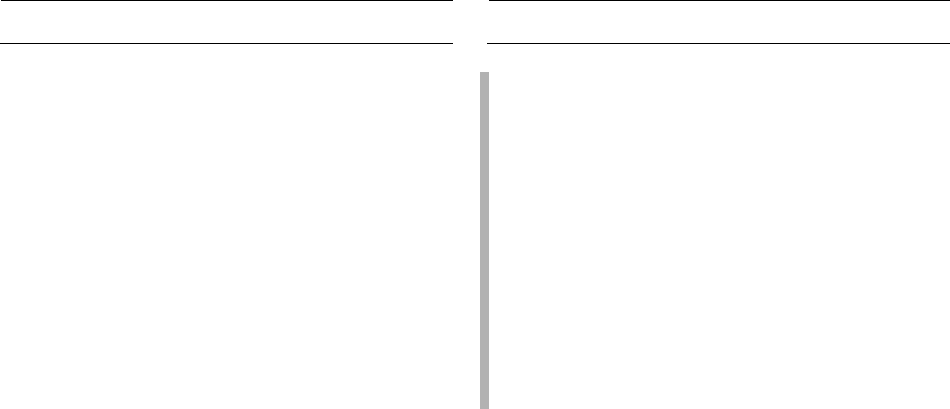
TANF TANF TANF TANF TANF TANF
SNAP SNAP SNAP SNAP SNAP SNAP
Division of Welfare and Supportive Services A-726
Eligibility and Payments Manual INCOME
15 May 01 MTL 01/15 Children’s Earned Income
Disregards used by children are not
counted when they apply for assistance
as an adult.
ONGOING: Once a child has used the six
(6) month full-time student exemption in a
calendar year, their income is not
countable in the final benefit
determination for as long as they continue
full-time student status.
The 130% income test only applies in the
application month.
When the child’s earnings cannot be separated from that of other household members,
prorate total earnings equally among the working members.
727 Contractual Earnings
Contractual earnings are wages and salaries predetermined prior to the start of
employment. Self-employment income, unearned income, or income received on an
hourly or piecework basis are not included. The two basic types of contractual earnings
are
● Seasonal contractual employment — available only during certain months of
the year and recurs each year. Examples: school-related employment (e.g.,
teachers, bus drivers, food handlers), certain types of farm work, and summer or
winter employment. Prorate contracted seasonal employment that is a
household's annual means of support over 12 months. If the income supports
only a portion of the year and the household supplements its earnings from other
sources the rest of the year, average the earnings over the period of time they
are intended to cover.
Example: A bus driver has a contract with the school district to drive for two or
more school years. The contract has a set amount of wages for each year. The
set amount is not contingent on the number of hours worked. This is considered
seasonal contractual earnings because the driver only works for part of the year.
● Contractual employment — non-seasonal if contracted for a specific amount of
time and does not recur. Prorate earnings over the period of time covered by the
contract.
Example: Joe is hired to clear a large piece of property of all weeds and trash.
The property owner will pay Joe a set price of $1300 to clear the property within
a three month time frame. The contract is to clear the property for a set price in a
specific time period regardless of the number of hours that will be required to do
the work.

TANF TANF TANF TANF TANF TANF
SNAP SNAP SNAP SNAP SNAP SNAP
A-727.1 Division of Welfare and Supportive Services
INCOME Eligibility and Payments Manual
Monthly Budgeting of Contractual Earnings 15 May 01 MTL 01/15
727.1 Monthly Budgeting of Contractual Earnings
To determine the monthly contractual earnings, divide the total gross amount of
earnings provided in the contract by the number of months the contract covers.
728 Disability Benefits
728.1 Disability Insurance Benefits
Count as unearned income. Exception:
If the benefits are employer funded and
the employee receives the benefits while
recuperating and remains employed,
count as earned income.
Count as unearned income.
728.2 Agent Orange Settlement Payments
Exempt from income and resources any Agent Orange Settlement Payments disbursed
by AETNA Insurance Company and paid to
● disabled veterans exposed to Agent Orange while in Vietnam who suffer from
total disabilities caused by any disease, and
● survivors of deceased disabled veterans.
Disabled veterans receive yearly payments. Survivors of deceased disabled veterans
receive a lump-sum settlement payment.
Note: Count Veteran's Administration disability payments as unearned income if they
are paid to veterans with service-connected disabilities resulting from exposure to Agent
Orange.
728.3 Radiation Exposure Compensation Act Payments
Exempt payments from the Radiation Exposure Compensation Act, Public Law
101-426.
728.4 Disability Payment for Children of Women Vietnam Veterans
Exempt any Veteran’s Administration payment allowance for an individual with a
disability from one or more covered birth defects who is a child of a woman Vietnam
veteran. For the purpose of this section:

TANF TANF TANF TANF TANF TANF
SNAP SNAP SNAP SNAP SNAP SNAP
Division of Welfare and Supportive Services A-728.4
Eligibility and Payments Manual INCOME
15 May 01 MTL 01/15 Disability Payment for Children of Women Vietnam Veterans
● Vietnam veteran means a woman who performed active military service in the
Republic of Vietnam during the period beginning on February 28, 1961 and
ending on May 7, 1975.
● Covered birth defect means any birth defect identified by the Veteran’s
Administration as a birth defect associated with the service of women Vietnam
veterans and has resulted, or may result, in permanent physical or mental
disability.
728.5 Transitional Compensation for Abused Family Members (Military)
Congress passed regulations to provide monthly payments for dependents abused by
an active member of the armed forces. Certain military eligibility requirements must be
met to qualify for and receive the payments.
Transitional compensation, if approved with respect to a member shall be paid for a
period of not less than 12 months and not more than 36 months. Any compensation
received is considered unearned income.
730 ADDITIONAL TYPES OF INCOME – PART I
731 Dividends and Royalties
Count as unearned income.
732 Advanced Earned Income Tax Credits (EITC)
Households with tax dependents and earnings below certain established levels are
potentially eligible for EITC payments. The EITC money may be included in
● an employee's paycheck (advance EITC payments) before their income tax
return is filed. Advanced EITC received with wages from an employer are not
considered in determining gross earned income and/or
● the household’s Federal Income Tax refund. The total amount of a Federal Tax
refund received after December 17, 2010 is disregarded as income and a
resource in the month received and an additional 11 months.
733 Educational Assistance
Educational assistance is any financial aid for vocational or educational courses from
● an organization (such as fraternal, alumni, etc.).
● a government program or agency (such as U.S. Office of Education, Veteran's
Administration).
Verify all educational assistance to determine whether it is exempt or non-exempt.

TANF TANF TANF TANF TANF TANF
SNAP SNAP SNAP SNAP SNAP SNAP
A-733 Division of Welfare and Supportive Services
INCOME Eligibility and Payments Manual
Educational Assistance 15 May 01 MTL 01/15
Consider loans for education (including
loans from relatives or other people) as
educational assistance only if payment is
deferred.
Most educational assistance programs are administered through the U.S. Office of
Education under Title IV of the Higher Education Act. A few examples of the most
common Title IV educational assistance grants include:
● Pell grants
● Stafford Loan Program
● Parent Loans for Students (PLUS Loans)
● Supplemental Educational Opportunity Grants
● College Work Study
● Carl D. Perkins Loans (Title IV, Part E) (formerly National Direct Student Loans)
Educational assistance is also provided by the National Community Services Act
(NCSA) program. Clients are awarded from $1,000 to $4,000 per year of completed
services to apply toward past or future educational expenses. Do not count the
educational award, as it is always made payable directly to the financial institution or
institution of higher learning.
The Veterans Administration provides educational assistance under a number of
different programs. Payments are usually made monthly only for those months the
veteran is in school. If school attendance is less than full time, the payments may be
made less frequently. Dependents and survivors of veterans may also be eligible for
educational benefits. Some VA educational benefits are based on contributions by the
veteran.
VA educational benefits paid directly to the veteran are counted as unearned
income. However, any portion of a grant, scholarship or fellowship used for
paying tuition, fees or other necessary educational expenses is excluded from
income.
The Monthly Housing Allowance (MHA) received by recipients of the Post 9-11
GI-Bill cannot be reduced for other educational expenses as this payment is
earmarked specifically for shelter expenses-all tuition and fees are paid directly
to the school for the benefit of the veteran.
733.1 Educational Assistance General Procedures
The following are procedures for determining countability and budgeting educational
assistance. Apply these procedures to students of:

TANF TANF TANF TANF TANF TANF
SNAP SNAP SNAP SNAP SNAP SNAP
Division of Welfare and Supportive Services A-733.1
Eligibility and Payments Manual INCOME
15 May 01 MTL 01/15 Educational Assistance General Procedures
● a post-secondary institution,
● a school for mentally or physically handicapped, or
● a program which provides for completion of a secondary school diploma or the
equivalent (such as a GED).
"Post-secondary" includes institutions of higher education and others not requiring a
high school diploma (such as, community colleges and vocational educational
programs) authorized by the state to provide educational or training programs beyond
secondary education.
Exempt educational assistance
● funded by Title IV of the Higher Education Act;
● from other sources which cover items not included in the TANF needs standards
(see manual section A-600), including assistance made available for attendance
costs;
● Governor’s Millennium Scholarship provided by Nevada through the tobacco
settlement.
Exempt the amount of assistance earmarked for allowable expenses, from countable
education income, designated by either
● the provider (school, institution, program, or other grantor)
or
● the student (and verify if questionable) when
– the provider does not designate an amount, or
– the amount designated by the student exceeds the amount designated by
the provider.
Room and board is not deducted from educational assistance. Countable income may
be reduced to zero after subtracting other allowable costs of attendance.
Budget as unearned income the portion of educational assistance which exceeds
allowable educational expenses and prorate it over the period it is intended to cover. If
a client receives work study income (other than Title IV), deduct 20% of any work study
income remaining after excluding expenses previously described. Do not deduct
educational expenses from income other than countable educational assistance.
733.2 Budgeting — Determining Educational Assistance and Expenses
Determine educational assistance and expenses by requesting the student provide
● Form 2020 completed by the institution, or
● proof of the amount of all types of educational assistance, such as the student's
financial aid authorization letter, which lists the amount of educational assistance
the student receives, and

TANF TANF TANF TANF TANF TANF
SNAP SNAP SNAP SNAP SNAP SNAP
Division of Welfare and Supportive Services A-733.2
Eligibility and Payments Manual INCOME
13 Nov 01 MTL 13/05 Budgeting-Determining Educational Assistance and Expenses
● proof of educational expenses. An example is the student's budget for cost of
attendance available from the school's financial aid office. This is developed by
the school and identifies various expenses a student has at that school (such as
room, board, tuition, personal expenses, books, etc.). The budget may vary for
different students depending on their status as graduates or undergraduates,
type of housing, degree plan, need for child care, financial dependency, etc.
Note: Also acceptable as proof is any document or statement from the school or the
grantor of the educational assistance which "earmarks" or specifies how the money is to
be spent.
If the school will not provide a budget for cost of attendance, or the student claims their
educational expenses will exceed the amounts on the budget, allow the costs of
attendance designated by the student. If an expense claimed by the student is
questionable, allow it only after it is verified.
Prepaid educational costs or monthly payments for individuals to use in future
years are not allowable deductions.
733.2.1 Step-by-Step Procedures
When a household receives educational assistance from more than one source,
determine if each source is exempt or budgetable. Deduct allowable expenses from
budgetable educational income.
1. Determine the total of all nonexempt educational assistance.
2. Total the allowable educational expenses and subtract them from Step 1. Do not
subtract room and board expenses.
Note: Ensure any amounts designated by the student include expenses for the
same period of time covered by the educational assistance.
If the student receives work study income, go to Step 3. Otherwise, go to Step 4.
3. Determine countable work study income (other than Title IV).
a. Subtract from work study income any amount of allowable expenses that
exceed assistance totaled in Step 1, if any, and
b. Deduct 20% of any countable work study income remaining from Step
3(a).
Note: Do not count Title IV work study assistance as SNAP income.

TANF TANF TANF TANF TANF TANF
SNAP SNAP SNAP SNAP SNAP SNAP
A-733.2.1 Division of Welfare and Supportive Services
INCOME Eligibility and Payments Manual
Step-By-Step Procedures MTL 13/05 01 Nov 13
4. Count any remaining educational assistance from Step 2 and/or Step 3 and
average the income over the period the money is intended to cover to determine
the monthly income from these sources.
5. Add countable monthly amounts of any cash prizes, gifts, or awards from
parents, guardians, or any other non-household member for the student's
support.
6. Determine the household's eligibility and benefits as in any other case,
considering all other income the student or other household members received.
When educational assistance that could not be anticipated is received after the school
term or semester has begun, prorate the income, after exclusions, over the period it is
intended to cover. Include it as income only for the remainder of the term. Example: If
an unanticipated scholarship is received in November, prorate the scholarship to cover
the entire semester (September — December). Count the prorated amount as income
for only two months (November and December).
Count any other financial assistance as a contribution in the month received.
733.2.2 Miscellaneous Personal Expenses
Deduct miscellaneous personal expense(s) designated either by the school/provider or
by the student.
Note: If the school/provider and the student both designate an amount for a
miscellaneous personal expense, allow the greater amount.
Costs for room and board may not be considered a miscellaneous personal expense.
733.3 Verification of Student Income
Verify nonexempt scholarships, loans, or grants from the source providing the money.
Verify exempt scholarships, loans, or grants only if information provided by the student
is questionable.
734 Energy Assistance
Energy or utility assistance (payments and supplements) are paid to or on behalf of
TANF and SNAP households from various governmental and private sources. The
assistance may be in the form of cash, vendor, in-kind and two-party check payments.
Use the following chart below to exempt or count this assistance as income.

TANF TANF TANF TANF TANF TANF
SNAP SNAP SNAP SNAP SNAP SNAP
Division of Welfare and Supportive Services A-734
Eligibility and Payments Manual INCOME
15 May 01 MTL 01/15 Energy Assistance
SOURCE
TYPE PAYMENT
TANF
SNAP
Federal and state funded energy
assistance provided by the Energy
Assistance Program, administered
by the DWSS. Federal and state
funded weatherization services,
including emergency repair or
replacement of heating or cooling
appliances provided through the
Weatherization Program admin-
istered by the Housing Division.
• vendor
• in-kind
• two-party
check
• cash
exempt
exempt
government-funded utility
supplement (federal or state) or
local housing authority
• vendor
• in-kind
• two-party
check
exempt
exempt
• cash
exempt
count (except do not
count utility supplemental
payments issued directly
to the household or
vendored by HUD/
Section 8 or Farmers
Administration — FmHA)
local government payments
• vendor
• in-kind
• two-party
check
exempt
exempt
• cash
exempt
exempt if USDA has
approved for exemption
private nonprofit organization
(based on need)
• vendor
• in-kind
• two-party
check
exempt
exempt
• cash
count
count
Notes:
● If an excludable energy assistance payment is combined with other payments,
exempt only the energy assistance portion from income.
● Energy assistance provided under Title IV-A of Social Security Act (welfare block
grant) is countable income.
● Income from State or local general assistance which (under state law) cannot be
provided in cash directly to the household is excluded as income.
735 Foster Care Payments
Exempt the income and resources of a
child receiving federal, state, or local
foster care payments.
Count as unearned income if the foster
child or adult is included in the household.
Exempt the foster care payment if the
household chooses to consider the foster
child or adult a boarder. The exemption is
valid regardless of how the foster parent
spends the money.

TANF TANF TANF TANF TANF TANF
SNAP SNAP SNAP SNAP SNAP SNAP
A-736 Division of Welfare and Supportive Services
INCOME Eligibility and Payments Manual
Government-Sponsored Programs 15 May 01 MTL 01/15
736 Government-Sponsored Programs
Count payments from government-sponsored programs unless exempted by other
policy in this chapter.
736.1 Crime Victim's Compensation Payments
Crime victim's compensation payments are payments from the funds authorized by
state legislation to assist a person who
● has been a victim of a violent crime;
● was the spouse, parent, sibling, or adult child of a victim who died as a result of a
violent crime; or
● is the guardian of a victim of a violent crime.
The payments are distributed by the Victim’s of Crime Division in monthly payments or
in a lump sum payment and may be designated to cover clothing, rent, utilities, food,
transportation, medical needs or replacement costs, etc.
Exempt payments received on a monthly basis or in a lump sum.
736.2 Government Disaster Payments
Exempt government payments, such as SBA loans and IFG funds, made available to
restore a home and personal possessions damaged in a disaster if the household is
subject to legal penalties when the funds are not used as intended.
736.3 National and Community Services Act (NCSA)
The National and Community Services Act (NCSA) of 1993 established a corporation to
administer paid volunteer service programs. The corporation provides funds, training,
and technical assistance to states and communities to develop and expand human,
education, environmental, and public safety services.
The corporation oversees existing programs created under the Domestic Volunteer
Service Act (DVSA) of 1973, (P.L. 93-113) such as
● Volunteers in Service to America (VISTA),
● Retired Senior Volunteer Program (RSVP),
● Foster Grandparents,
● Senior Companions,
● Community Service Employment Program (includes Senior Citizen Service
Employment),

TANF TANF TANF TANF TANF TANF
SNAP SNAP SNAP SNAP SNAP SNAP
Division of Welfare and Supportive Services A-736.3
Eligibility and Payments Manual INCOME
15 May 01 MTL 01/15 National and Community Services Act (NCSA)
● Service Corp of Retired Executives (SCORE),
● Active Corps of Executives (ACE), and
● Mini Grant Program
AmeriCorps
Certain income received from Title I, II and III programs by volunteers for services
performed in programs stipulated in the Domestic Volunteer Act of 1973 is exempt. In
addition to the programs listed above, any funds received through Title V of the Older
Americans Act are exempt.
Monthly living stipends received by individuals participating in AmeriCorps State and
National are exempt from all programs. No wages are paid to these individuals.
Exception: Exempt Title I, AmeriCorps VISTA payments received by DVSA volunteers
only if the person was receiving TANF or SNAP when the person joined the VISTA
program. Temporary interruptions in participation do not alter the exclusion once an
initial determination has been made.
736.4 Native and Indian Claims and Distributions
The following sections contain Native and Indian claims and distribution information,
and judicial rulings affecting income and resources pertaining to Indians. The informa-
tion may not be all inclusive. Contact program staff in Eligibility and Payments for
clarification.
736.4.1 Income as Distribution or Per Capita Payment
Provisions of appropriate federal laws pertinent to Section 7 of the Judgment Fund
Distribution Act, Public Law (PL) 93-134, as amended by Section 4 of PL 97-458, 25
U.S.C. 1407; and Section 8 of PL 93-134, as added PL 97-458, Section 4, 96 Stat,
2514, amended PL 103-66, 107 Stat. 663, describes whether income or interests in
Indian trusts are taxable or should be considered as resources or income under the
Social Security Act or any other federal or federally assisted program.
Income applies to either distributions of funds appropriated in satisfaction of a judgment
in favor of Indian tribes, bands, groups, pueblos, or communities by the Indian Claims
Commission or the Court of Claims or per capita payments as permitted by the Per
Capita Distributions Act of 1983, Public Law 98-64, made to Indians out of tribal trust
revenue held by the federal government, with the exception of funds held by Alaska
Native Regional and Village Corporations (ANRVC) are not held in trust by the
Secretary of the Interior. Therefore, ANRVC dividend distributions are not excluded
from countable income under this exclusion.

TANF TANF TANF TANF TANF TANF
SNAP SNAP SNAP SNAP SNAP SNAP
A-736.4.1
1
Division of Welfare and Supportive Services
INCOME Eligibility and Payments Manual
Income as Distribution or Per Capita Payment 15 May 01 MTL 01/15
● Tax Exempt Income; Resources Exemption Limitation
None of the funds which:
1. are distributed per capita or held in trust by the Secretary of the Interior;
2. on January 12, 1983, are to be distributed per capita or are held in trust
pursuant to a plan approved by the Congress prior to January 12, 1983;
3. were distributed pursuant to a plan approved by the Congress after
December 31, 1981, but prior to January 12, 1983, and any purchases
made with such funds, or
4. are paid by the State of Minnesota to the Bois Forte Band of Chippewa
Indians pursuant to the agreements of such Band…under the Treaty of
September 30, 1854, including all interest accrued on such funds during
any period in which such funds are held in a minor’s trust…shall be
subject to federal or state income taxes, nor shall such funds…be
considered as income or resources nor otherwise utilized as the basis for
denying or reducing the financial assistance or other benefits to which
such household or member would otherwise be entitled under the Social
Security Act (42 U.S.C. 301 et seq.) or, except for per capita shares in
excess of $2,000, any federal or federally assisted program;
5. are specifically excluded by any other federal statute from consideration
as income for the purpose of determining eligibility of any federal or
federally assisted program.
Funds from the following sources are also exempt:
1. Per capita payments to members of the Red Lake Band of Chippewa
Indians pursuant to Section 3 of PL 85-794(#1);
2. Per capita payments by the Blackfeet and Gros Ventre tribal governments
to members per Section 4 of PL 92-254 and Section 6 of PL 97-408;
3. Settlement payments to members of the Hopi and Navajo Tribes per
Section 22 of PL 93-531, as amended by PL 96-305I*;
4. Per capita payments or funds held in trust for members of the Sac and
Fox Indian Nation per Section 6 of PL 94-189*;
5. Per capita payments or funds held in trust for members of the Grand River
Band of Ottawa Indians per Section 6 of PL 94-540*;

TANF TANF TANF TANF TANF TANF
SNAP SNAP SNAP SNAP SNAP SNAP
Division of Welfare and Supportive Services A-736.4.1
2
Eligibility and Payments Manual INCOME
13 Nov 01 MTL 13/05 Income as Distribution or Per Capita Payment
6. Judgment funds distributed per capita to members of the Confederated
Tribes and Bands of the Yakima Indian Nation or the Apache Tribe of the
Mescalero Reservation per Section 2 of PL 95-433;
7. Judgment funds distributed per capita…to members of the Delaware Tribe
of Indians and the absentee Delaware Tribe of Western Oklahoma per
Section 8 of PL 96-318;
8. All funds and distributions to members of the Passamaquoddy Tribe, the
Penobscot Nation, and the Houlton Band of Maliseet Indians under the
Maine Indian Claims Settlement Act, and the availability of such funds
under Section 9 of PL 96-420*;
9. Any distributions of judgment funds to members of the San Carlos Apache
Indian Tribe of Arizona per Section 7 of PL 93-123*;
10. Any distribution of judgment funds to members of the Wyandot Tribe of
Indians of Oklahoma per Section 6 of PL 97-371;
11. Distributions of judgment funds to members of the Shawnee Tribe of
Indians (Absentee Shawnee Tribe of Oklahoma, the Eastern Shawnee
Tribe of Oklahoma and the Cherokee Band of Shawnee descendants) per
Section 7 of PL 97-372;
12. Judgment funds distributed per capita…to members of the Miami Tribe of
Oklahoma and the Miami Indians of Indiana per Section 7 of PL 97-376;
13. Distributions of judgment funds to members of the Clallam Tribe of Indians
of the State of Washington (Port Gamble Indian Community, Lower Elwha
Tribal Community and the Jamestown Band of Clallam Indians) per
Section 6 of PL 97-402;
14. Judgment funds distributed per capita or made available for programs for
members of the Pembina Chippewa Indians (Turtle Mountain Band of
Chippewa Indians, Chippewa Cree Tribe of Rocky Boy’s Reservation,
Minnesota Chippewa Tribe, Little Shell Band of the Chippewa Indians of
Montana, and the nonmember Pembina descendants) per Section 9 of
PL 97-403;
15. Per capita distributions of judgment funds to members of the Assiniboine
Tribe of Fort Belknap Indian Community and the Papago Tribe of Arizona
under Sections 6 and 8(d) of PL 97-408;

TANF TANF TANF TANF TANF TANF
SNAP SNAP SNAP SNAP SNAP SNAP
A-736.4.1
3
Division of Welfare and Supportive Services
INCOME Eligibility and Payments Manual
Income as Distribution or Per Capita Payment MTL 13/05 01 Nov 13
16. Up to $2,000 of per capita distributions of judgment funds to members of
the Confederated Tribes of the Warm Springs Reservation under
Section 4 of PL-436*;
17. Judgment funds distributed to the Red Lake Band of Chippewa Indians
per Section 3 of PL 98-123 (#2);
18. Per capita distributions or family interest payments for members of the
Assiniboine Tribe of Fort Belknap Indian Community of Montana and the
Assiniboine Tribe of the Fort Peck Indian Reservation and Montana under
Section 5 of PL 98-124;
19. Distributions of judgment funds and income derived there from to
members of the Shoalwater Bay Indian Tribe under Section 5 of
PL 98-432;
20. All distributions to heirs of certain deceased Indians under Section 8 of the
Old Age Assistance Claims Settlement Act, PL 98-500*;
21. Judgment funds distributed per capita…for members of the Wyandotte
Tribe of Oklahoma and the Absentee Wyandottes under Section 106 of
PL 98-602;
22. Per capita and dividend payment distributions of judgment funds to
members of the Santee Sioux Tribe of Nebraska, the Flandreau Santee
Tribe, the Prairie Island Sioux, Lower Sioux, and Shakopee Mdewakanton
Sioux Communities of Minnesota per Section 8 of PL 99-130 and
Section 7 of PL 93-134, as amended by PL 97-458;
23. Funds distributed per capita or held in trust for members of the Chippewas
of Lake Superior and the Chippewas of the Mississippi per Section 6 of
PL 99-146 (#3);
24. Distributions of claims settlement funds to members of the White Earth
Band of Chippewa Indians as allottees, or their heirs, under Section 16 of
PL 99-264 (#4);
25. Payments or distributions of judgment funds, and the availability of any
amount of such payments or distributions, to members of the Saginaw
Chippewa Indian Tribe of Michigan under Section 6 of PL 99-346* (#5);
26. Judgment funds distributed per capita or held in trust for members of the
Chippewas of Lake Superior and the Chippewas of the Mississippi under
Section 4 of PL 99-377 (#6);

TANF TANF TANF TANF TANF TANF
SNAP SNAP SNAP SNAP SNAP SNAP
Division of Welfare and Supportive Services A-736.4.1
4
Eligibility and Payments Manual INCOME
13 Nov 01 MTL 13/05 Income as Distribution or Per Capita Payment
27. Judgment funds distributed to members of the Cow Creek Band of
Umpqua Tribe of Indians under Section 4 of PL 200-139;
28. Per capita payments of claims settlement funds to members of the
Coushatta Tribe of Louisiana under Section 2 of PL 100-411 and
Section 7 of PL 93-134, as amended by PL 97-458*;
29. Funds distributed per capita for members of the Hoopa Valley Indian Tribe
and the Yurok Indian Tribe under Sections 4, 6 and 7 of PL 100-580 and
Section 3 of PL 98-64*;
30. Judgment funds held in trust by the United States, including interest and
investment income accruing on such funds, and judgment funds made
available for programs or distributed to members of the Wisconsin Band of
Potawatomi (Hannahville Indian Community and Forest County
Potawatomi) under Section 503 of PL 100-581;
31. All funds, assets and income from trust funds transferred to the members
of the Puyallup Tribe under Section 10 of the Puyallup Tribe of Indians
Settlement Act of 1989, PL 101-41II;
32. Judgment funds distributed per capita, or held in trust…for members of the
Seminole Nation of Oklahoma, the Seminole Tribe of Florida, Miccosukee
Tribe of Indians of Florida and the Independent Seminole Indians of
Florida under Section 8 of PL 101-277*;
33. Payments, funds, distributions or income derived from them to members
of the Seneca Nation of New York under Section 8(b) of the Seneca
Nation Settlement Act of 1990, PL 101-503**;
34. Per capita distributions of settlement funds under Section 102 of the
Fallon Paiute Shoshone Indian Tribes Water Rights Settlement Act of
1990, PL 101-618, and Section 7 of PL 93-134, as amended by
PL 97-458;
35. Settlement funds, assets, income, payments or distributions from trust
funds to members of the Catawba Indian Tribe of South Carolina under
Section 11(m) of PL 103-116;
36. Settlement funds held in trust (including interest and investment income
accruing on such funds) for, and payments made to, members of the
Confederated Tribes of the Colville Reservation under Section 7(b) of
PL 103-436*;

TANF TANF TANF TANF TANF TANF
SNAP SNAP SNAP SNAP SNAP SNAP
A-736.4.1
5
Division of Welfare and Supportive Services
INCOME Eligibility and Payments Manual
Income as Distribution or Per Capita Payment 15 May 01 MTL 01/15
37. Payments received under the Alaska Native Claims Settlement Act,
PL 92-203, Section 21(a)(#1);
38. Distributions received by an individual Alaska Native or descendant of an
Alaska Native from an Alaska Native Regional and Village Corporation
pursuant to the Alaska Native Claims Settlement Act, as follows: cash,
including cash dividends on stock received from a Native Corporation to
the extent that it does not, in the aggregate, exceed $2,000 per individual
each year; stock, including stock issued or distributed by a Native
Corporation as a dividend or distribution on stock; a partnership interest;
land or an interest in land, including land or an interest in land received
from a Native Corporation as a dividend or distribution on stock; and an
interest in settlement trust. This exclusion is pursuant to Section 15 of the
Alaska Native Claims Settlement Act Amendments of 1987, PL 100-241,
101 Stat. 1812, 43 U.S.C. 1626(c), effective February 3, 1988**(2).
39. Per capita distributions awarded to the Western Shoshone Indians
pursuant to Public Law 108-270 approved July 7, 2004.
(*) This exclusion applies to the income of sponsors of aliens only if the alien
lives in the sponsor’s household.
(**) This exclusion does not apply in deeming income from sponsors to aliens.
(#s) Respective laws pertinent to the Chippewa Indians and respectively to the
Alaskan Natives.
736.4.2 Court Exempted Income
Protections in the beginning of this chapter apply only to funds and other interests held
in trust by the federal government. The following court rulings also exempt incomes for
the tribes listed below:
1. Income from the sale of timber from land held in trust, Squire v.
Capoeman, 351 U.S. 1(1956);
2. Income derived from farming and ranching operations on reservation land
held in trust by the federal government, Stevens v. IRS, 452 F.2d 741(9
th
Cir. 1971);

TANF TANF TANF TANF TANF TANF
SNAP SNAP SNAP SNAP SNAP SNAP
Division of Welfare and Supportive Services A-736.4.2
Eligibility and Payments Manual INCOME
15 May 01 MTL 01/15 Court Exempted Income
3. Internal Revenue ruling has also found the following to qualify if they were
derived from trust property, including income derived from rentals,
royalties, sale proceeds from natural resources of the land, and sale
proceeds from crops grown on the land and use of the land for grazing
purposes. The Law of Federal Income Taxation, Jacob Mertens, Jr.,
Section 6A.101.
736.4.3 Income from Tribal Gaming
Per capita distributions of revenues from tribal gaming on tribal trust property are not
protected by Sections 1407 and 1408, as such funds are not held in trust by the federal
government. Per capita payments resulting from gaming revenues are subject to
federal taxation, Public Law 100-97, Section 11, 102 Stat. 2472, and are not exempt.
736.4.4 Income from Lands and Subsurface Mineral Rights
Provisions of the National Industrial Recovery Act, the Emergency Relief Appropriation
Act, and Section 55 of the Act of August 24, 1935, and lastly Public Law 94-114,
conveyed portions of the lands and subsurface mineral rights to designated tribes,
including accrued income. Funds distributed to the members of the tribes identified or
to their households are excluded as income or resources for the purposes of
determining eligibility for assistance under the Social Security Act or any other federal or
federally assisted program. Tribes include:
1. Bad River Bank of the Lake Superior Tribe of Chippewa Indians of
Wisconsin, Bad River Reservation, Wisconsin:*
2. Blackfeet Tribe, Blackfeet Reservation, Montana;*
3. Cherokee Nation of Oklahoma, Oklahoma;*
4. Cheyenne River Sioux Tribe, Cheyenne River Reservation, South Dakota;
5. Crow Creek Sioux Tribe, Crow Creek, South Dakota;*
6. Lower Brule Sioux Tribe, Lower Brule Reservation, South Dakota;*
7. Devil’s Lake Sioux Tribe, Fort Totten, North Dakota;*
8. Fort Belknap Indian Community, Fort Belknap Reservation, Montana;*
9. Assiniboine and Sioux Tribes, Fort Peck Reservation, Montana;*

TANF TANF TANF TANF TANF TANF
SNAP SNAP SNAP SNAP SNAP SNAP
A-736.4.4 Division of Welfare and Supportive Services
INCOME Eligibility and Payments Manual
Income from Lands and Subsurface Mineral Rights 15 May 01 MTL 01/15
10. Lac Courte Oreilles Bank of Lake Superior Chippewa Indians, Lac Courte
Oreilles Reservation, Wisconsin;*
11. Keweenaw Bay Indian Community, L’Anse Reservation, Michigan;*
12. Minnesota Chippewa Tribe, White Earth Reservation, Minnesota;*
13. Navajo Tribe, Navajo Reservation, New Mexico;*
14. Ogalala Sioux Tribe, Pine Ridge Reservation, South Dakota;*
15. Rosebud Sioux Tribe, Rosebud Reservation, South Dakota;*
16. Shoshone-Bannock Tribes, Fort Hall Reservation, Idaho;*
17. Standing Rock Sioux Tribe, Standing Rock Reservation, North and South
Dakotas.*
And, by other statutes, receipts from lands held by the following tribal entities are
exempt:
1. Seminole Indians in Florida by the Act of July 20, 1956, 86 Stat. 581;
2. Pueblos in Zia and Jemez in New Mexico by the Act of August 2, 1956, 70
Stat. 941;
3. Burns Paiute Indian Colony in Oregon by the Act of October 13, 1972, 86
Stat. 806;
4. Stockbridge Munsee Indian Community in Wisconsin by the Act of
October 9, 1972, 86 Stat. 795, Public Law 94-114;
5. Pueblos of Santa Ana and Zia in New Mexico, Public Law 95-499, 92 Stat.
1680;
6. Pueblo of Zia of New Mexico, Public Law 95-499.
736.5 In-Home Family Preservation Program (FPP)/Supported Living
Arrangement (SLA)
In-Home Family Preservation Program (FPP) payments and Supported Living
Arrangement (SLA) payments are funds authorized by state legislation to assist
individuals with disabilities or mentally disabled SSI individuals so they can live in the
community.

TANF TANF TANF TANF TANF TANF
SNAP SNAP SNAP SNAP SNAP SNAP
Division of Welfare and Supportive Services A-736.5
Eligibility and Payments Manual INCOME
15 May 01 MTL 01/15 In-Home Family Preservation Program (FPP)/Supported
Living Arrangement (SLA)
In-Home FPP payments are administered and distributed by the Nevada Division of
Public and Behavioral Health (DPBH) for:
● persons with profound or severe mental retardation; or
● children under the age of 6 years with developmental delays.
Most In-Home Family Preservation or SLA payments are received in more than one
cash or vendor payment. In these multiple payment situations, exempt any portion of
the payment that is deducted or recouped as a case manager service fee and;
Exclude payments
● equal to the difference between
the payment allowance and the
100% need standard when the
payment is for items not included
in the need standard, or the
payment supplements the need
standard;
AND
● exempt payments to or received
on behalf of an SSI recipient, and
● exempt payments for medical
needs that are not paid by
Medicaid.
● exempt vendored SLA payments.
Exempt
● reimbursements for expenses other
than normal living expenses.
Notes:
● Medical expenses are not normal
living expenses.
● Do not allow a medical deduction for
any part of an expense that is
reimbursed.
● Reimbursements for receipted
expenditures are not considered
income.
Vendored SLA assistance is not
budgetable. This includes food vouchers
which are taken to a retail food store.
Vendored expenses are not allowable
deductions. The only program expense
allowed is the qualifying non-vendored
portion of expenses paid directly by the
client.
Example: If a client is responsible for
rent of $400, the SLA vendor pays $300,
but the client still must pay $100, allow
$100 as a shelter expense. If the
household’s utilities total $125, the client
is responsible for $50 and the SLA vendor
pays $75, the client is still eligible for a
utility expense. If the utility costs are for
heating and/or cooling, the Standard
Utility Allowance (SUA) should be
allowed.

TANF TANF TANF TANF TANF TANF
SNAP SNAP SNAP SNAP SNAP SNAP
A-736.5 Division of Welfare and Supportive Services
INCOME Eligibility and Payments Manual
In-Home Family Preservation Program (FPP)/Supported 15 May 01 MTL 01/15
Living Arrangement (SLA)
Whether or not SLA is deposited into a
bank account or patient fund, determine if
the funds are being vendored for such
things as rent, child care, utilities, food,
etc. The portion of the SLA which is
being vendored is not countable income.
If the client is provided SLA (in or out of
an account) which is not vendored,
evaluate which portion of the funds are
countable after allowable exclusions and
deductions.
The Division of Public and Behavioral Health (DPBH) may also refer to SLA as
Supplemental Living Assistance; however, this is the same as Supported Living
Arrangement.
Copies of “Service Agreements - Supported Living Arrangement”, account ledgers,
patient account records and bank account statements must be obtained for review and
case record retention. These documents will be used to determine which expenses are
being supported/supplemented with SLA payments and those expenses the household
is responsible for, based on the household income/need. The service agreement is an
agreement between the household, provider and the State of Nevada Division of Public
and Behavioral Health (DPBH). The agreement identifies established SLA program
dollar allowances for specific expenses and also states the financial responsibility for
both the individual and state.
Case management, administrative and direct service fee totals are subtracted from SLA
room and board total amount identified in the last column under the Budget Plan
section on the SLA service agreement titled “State”. The remainder of the income is
evaluated to determine if it is budgetable or exempt. If it is determined the SLA
allowance for room and board are all vendored, it is not necessary to complete
mathematical computations.
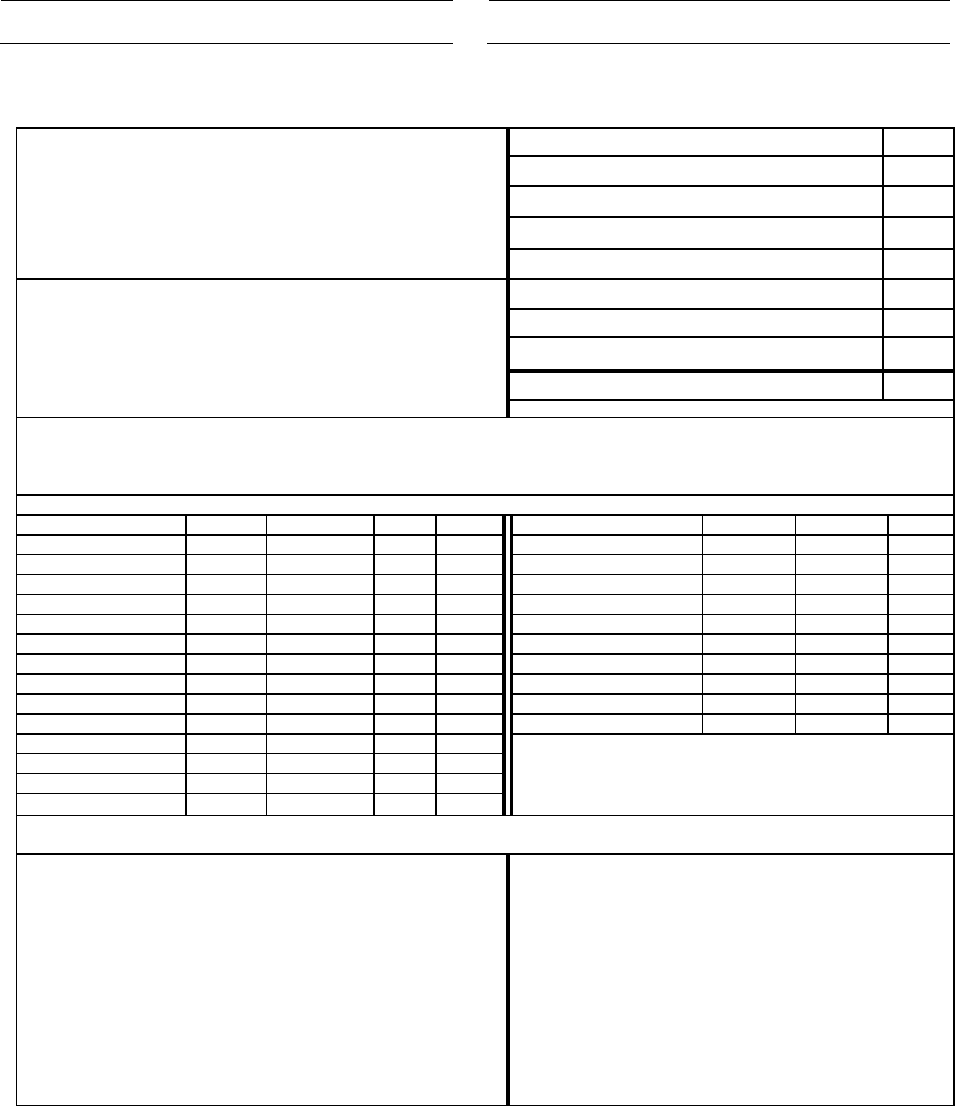
TANF TANF TANF TANF TANF TANF
SNAP SNAP SNAP SNAP SNAP SNAP
Division of Welfare and Supportive Services A-736.5
Eligibility and Payments Manual INCOME
15 May 01 MTL 01/15 In-Home Family Preservation Program (FPP)/Supported
Living Arrangement (SLA)
Service Agreement (MH)
SUPPORTED LIVING ARRANGEMENT
Client Name: __________________________________________________________________
Client Address: __________________________________________________ Apt # ___________
__________________________________________________________________
SSN ____/____/____ - ____/____ - ____/____/____/____ Case # ______________________
Monthly Client Resources
Net Amount
Earnings From Employment
Employer:
N/A
Other
Other
AGREEMENT BETWEEN:
The Client, the Provider and the State of Nevada, Division of Mental Hygiene and Mental Retardation,
Kinkead Building, Room 602, 505 E. King Street, Carson City, Nevada 89710.
Agency (Circle) SNAMHS NMH RURAL CLINICS
SSI
RSDI (SSDI)
Other Benefits:
Total Client Resources
HUD SHELTER PLUS CARE (Cirle) HUD SHELTER PLUS CARE (Circle) YES NO
This Agreement shall be in effect beginning: __________________________________________________ through __________________________________________________
(Month, Day, Year) (Month, Day, Year)
This Agreement is: (Circle) New Renewal Amendment (If amended, dates of original Agreement) ____________________________ through ____________________________
ROOM AND BOARD BUDGET PLAN SPECIALIZED SERVICES
Monthly
Expenses
Client
Other
State
Hours
Hourly Rate
Cost
Retained Earning
Case Management
Personal Needs
Direct Services
Food
Direct Services
Rent
Direct Services
Utilities
Direct Services
Phone
Direct Services
Client Travel
Other
Medical
Staff Travel
N/A
N/A
Other
Administration
N/A
N/A
Room & Board Total
Services Total
N/A
Spec. Svcs. Total
ONE-TIME COSTS FOR THE MONTH OF: _________________________ $_____________
List one-time expenses: ___________________________________________________________
______________________________________________________________________________
Monthly Total
Last Monthly Total
Difference
Explain why contract increased, remained the same or decreased: _______________________________________________________________________________________________________________
SEE REVERSE SIDE OF AGREEMENT FOR ADDITIONAL CONDITIONS OF THE AGREEMENT.
MY SIGNATURE AFFIRMS THAT I AGREE WITH ALL CONDITIONS OF THIS AGREEMENT.
__________________________________________________________________________________
Signature of Provider Date
Provider Name: _______________________________________________________
Provider Address: _______________________________________________________
_______________________________________________________
Tax ID Number: _______________________________________________________
I authorize the identified division agency and provider to exchange information from my case
records for coordination of services and planning. Other uses are forbidden; this consent expires
with this agreement.
______________________________________________________________________________
Signature of Client Date
______________________________________________________________________________
Case Manager Date
______________________________________________________________________________
Housing Coordinator Date
______________________________________________________________________________
Business Office Date
______________________________________________________________________________
Administration Date
All SLA discrepancies are to be clarified with the issuing SLA agency (e.g. DPBH and/or
the contracted providers). Some SLA providers may issue cash assistance directly to
the individual as part of a self-sufficiency plan or because the client resides in rural or
outlying areas where provider services are limited.

TANF TANF TANF TANF TANF TANF
SNAP SNAP SNAP SNAP SNAP SNAP
A-736.5 Division of Welfare and Supportive Services
INCOME Eligibility and Payments Manual
In-Home Family Preservation Program (FPP)/ 15 May 01 MTL 01/15
Living Arrangement (SLA)
Example:
● The SLA service agreement shows a specific allowable rent amount of $400, with
individual responsible for $311 and a deficit of $89 which is identified as the SLA
payment. The $89 SLA payment is budgetable unless the rent expense is
vendored.
● The food expense is set at the maximum allotment value for one person, with
individual responsibility as the maximum allotment value because they receive
maximum SNAP benefits for a one-person household and no SLA payment
noted. There is no SLA food expense payment in this situation because the
client received maximum SNAP benefits.
If questions should arise about an DPBH service agreement, contact the issuing SLA
agency for clarification.
736.6 Nutrition Programs
Exempt the value of supplemental food assistance under the Child Nutrition Act of 1966
and under the special food service program for children (National School Lunch Act).
Exempt benefits received under Title VII, Nutrition Program for the Elderly, of the Older
American Act of 1965.
736.7 Relocation Assistance
Exempt payments provided under
● Title II of the Uniform Relocation Assistance and Real Property Acquisitions Act
of 1970.
• Public Law 93-531 to members of the
Navajo or Hopi Tribes.
● Title I of Public Law 100-383. These payments are made to Aleuts or individuals
of Japanese ancestry (or their heirs) who were relocated during World War II.

TANF TANF TANF TANF TANF TANF
SNAP SNAP SNAP SNAP SNAP SNAP
Division of Welfare and Supportive Services A-736.8
Eligibility and Payments Manual INCOME
15 May 01 MTL 01/15 Subsidized Housing Assistance
736.8 Subsidized Housing Assistance
The value of government housing and
other rental subsidies, whether cash, two-
party check, in-kind or vendor paid is
countable income. The value of the
subsidy up to $76 is counted as unearned
income to the household. The income is
only counted when the responsible tenant
of the subsidized housing is an individual
whose income is used to determine
eligibility.
When multiple responsible tenants are
included in the same household, only one
value of subsidized housing up to $76 is
budgeted (i.e., two-parent household and
both mother and father are responsible
tenants, consider only one subsidy).
When one or more responsible tenants
are not included in the same TANF
household, the subsidy amount is divided
by the number of responsible tenants and
the resulting figure of up to $76 is
budgeted per household (i.e., subsidy is
$120, two responsible tenants could get
$60 each. Subsidy is $300, two
responsible tenants could only get $76
each).
The subsidy is the financial assistance or
the portion of rent the housing entity pays
on behalf of the tenant(s).
Count
● cash payments, and
● vendor payments paid from state or
local government funds (unless
exempt as specified below)
Exempt
● in-kind payments
● federally funded vendor or two-party
check payments, and
● vendor payments paid by FmHA,
HUD, state or local housing
authorities funds for rent or mor-
tgages and transitional housing for
the homeless.
● Self-Help housing funds granted by
USDA-Rural Development to
financial lending institutes for low-
interest mortgages extended to
qualifying Nevada families to
purchase affordable housing.
● Manufactured Housing lot rent
subsidy for qualifying low income
mobile homeowners. The mobile lot
subsidy is paid directly to the mobile
home park. Note: If a lot subsidy is
being paid, only consider the portion
of the lot rent paid by the SNAP
household as a shelter expense
deduction.

TANF TANF TANF TANF TANF TANF
SNAP SNAP SNAP SNAP SNAP SNAP
A-736.8 Division of Welfare and Supportive Services
INCOME Eligibility and Payments Manual
Subsidized Housing Assistance 15 May 01 MTL 01/15
Only the following rent and housing
subsidies are considered in determining
the assistance unit’s share of
governmental rent or housing subsidy:
Housing and Urban
Development’s (HUD)
* Section 8
* Public Housing
* Indian Housing
* Transitional Housing
United States Department of
Agriculture’s (USDA)
* FmHA Section 515 Rental
Assistance
Note: The Manufactured Housing
Division’s lot rent subsidy program for
qualifying low income mobile
homeowners is not considered
subsidized housing assistance because
it is not a housing subsidy.
When the assistance unit is approved for
subsidized housing, the first month the
housing subsidy MUST be budgeted is
the second month following the month
the change occurred. However, a
change of circumstances is always acted
on as soon as administratively possible
(notification of adverse action is
required).
When the assistance unit receives
housing for a partial month, the value of
the subsidy for the full month is prorated
for the partial month. If the prorated
value of the subsidy is $76 or more, $76
is budgeted. If the prorated value is less
than $76, the actual amount of prorated
subsidy value is budgeted.

TANF TANF TANF TANF TANF TANF
SNAP SNAP SNAP SNAP SNAP SNAP
Division of Welfare and Supportive Services A-736.8
Eligibility and Payments Manual INCOME
15 May 01 MTL 01/15 Subsidized Housing Assistance
Exception: If there are verifiable barriers
to an individual being allowed to reside
in a subsidized residence, do not budget
the $76 until the household is able to
return to the residence (e.g., flood, fire,
condemned property, padlocked
eviction, domestic violence).
736.9 Independent Living Payments
Payments for the Independent Living Program are made from Title IV-E funds and are
distributed by DCFS staff to certain children when they leave foster care. Payments
Do not count.
Count as unearned income.
Exception: Exempt any amount of the
payments intended to reimburse the child
for expenses other than those for normal
living.
736.10 Individual Development Account (IDA)
The use of Individual Development Accounts (IDAs) are intended to improve the
economic independence and stability of individuals and families and to promote and
support the transition to economic self-sufficiency. Federal funds match the amount of
earnings low-income working individuals and families deposit into an IDA. IDA savings
are to be used for a first home purchase, post secondary educational expenses, or
business capitalization.
EXEMPT (while the individual is participating in the IDA program):
● Matching funds deposited into an
established IDA;
● Interest accruing on the matching
funds; and
● Funds (earnings) deposited and
interest earned by the individual.
● Matching funds deposited into an
established IDA; and
● Interest accruing on the matching
funds.
Earned income deposited into an IDA is
budgeted in determining eligibility and
allotment amounts for the month received.
Once the earned income is deposited into
the IDA, the funds are excluded
resources.
An individual whose participation in the IDA program has terminated, voluntarily or
otherwise, would no longer be covered by the exemption.

TANF TANF TANF TANF TANF TANF
SNAP SNAP SNAP SNAP SNAP SNAP
Division of Welfare and Supportive Services A-741
Eligibility and Payments Manual INCOME
15 Nov 01 MTL 03/15 Temporary Insurance Disability/Worker Compensation Payments
736.11 Census Income
Income received from the Census Bureau
for temporary employment related to
census activities is exempt.
Income received from the Census
Bureau for temporary employment
related to census activities is countable
as earned income.
737 In-Kind Income
In-kind benefits are those for which no monetary payment is made on behalf of the
household which may include meals, clothing, or housing.
Count the value of work performed in
exchange for one of the defined needs
outlined in manual section C-140 as
earned income. If services are not
exchanged for one of the defined needs, it
is not in-kind income.
Income in-kind is exempt.
738 Interest
Count interest from
● a trust account as unearned
income.
● bank accounts, credit unions,
IRAs and Retirement accounts.
Count as unearned income when
household receives account statement.
Note: residual income from a movie acting
career is unearned income.
Exempt Interest from
● an IDA savings account established under the Assets for Independence Act
(AFIA) - Public Law 105-285 or authorized by section 404(h) title IV of the Social
Security Act as long as the individual is participating in the IDA program. An
individual whose participation in the IDA program has terminated, voluntarily or
otherwise, would no longer be covered by this exemption.
739 Alimony
Count as unearned income.
Count as unearned income.
740 ADDITIONAL TYPES OF INCOME – PART II
741 Temporary Insurance Disability/Worker Compensation Payments
Temporary disability insurance and temporary worker compensation payments which
are employer-funded, such as Employers Insurance Company of Nevada (EICON)
compensation, are considered.

TANF TANF TANF TANF TANF TANF
SNAP SNAP SNAP SNAP SNAP SNAP
Division of Welfare and Supportive Services A-741
Eligibility and Payments Manual INCOME
15 Nov 01 MTL 03/15 Temporary Insurance Disability/Worker Compensation Payments
Count benefits for a permanent or
temporary disability as unearned income
if the recipient is no longer employed.
Count temporary disability insurance and
worker’s compensation payments which
are employer funded as earned income
when the recipient remains employed
while recuperating.
Count benefits for permanent or
temporary disability as unearned income.
Exceptions:
● Exempt any reimbursement for a medical bill the household paid.
Reimbursements are usually made by separate check.
● Exempt deductions for FICA or
income taxes if the benefit is
counted as unearned income.
742 Job Training
742.1 Workforce Investment Act (WIA) of 1998 (formerly JTPA)
Consider the gross amount of payments from WIA-funded programs as
● earned income, if received for on-the-job training (OJT), Non-WIA Limited Work
Experience (LWE) or Job Corps participation.
● unearned income such as incentive payments, if received for any other JTPA-
funded program (even if based on hourly participation).
WIA Earned Income Payments
WIA (Workforce Investment Act) earnings for individuals 17 years old or younger who
are under the parental control of another household member are exempt. This includes
income that is funded by both WIA and the employer. Note: WIA earnings will be
excluded until the month following the month the child becomes 18 years of age.
Additionally, all WIA income other than earnings from on-the-job (OJT) training program
under Section 204(5), title II, of WIA is exempt for ALL individuals. This includes
allowances, reimbursements or stipends for meals, transportation, WIA college work
study and other costs. EXCEPTION: A TANF child's WIA is exempt for six months in a
calendar year and then evaluated and budgeted as adult earnings.
Note: On-the-job training (OJT) payments under the Workforce Investment Act (WIA),
formerly known as JTPA, received under the Summer Youth Employment and Training
Program (SYETP) are also excluded as income. However, on-the-job training (OJT)
payments to youths, other than dependents under age 19, in year-round programs and
payments to adults are counted.

TANF TANF TANF TANF TANF TANF
SNAP SNAP SNAP SNAP SNAP SNAP
A-742.1 Division of Welfare and Supportive Services
INCOME Eligibility and Payments Manual
Workforce Investment Act (WIA) of 1998 (formerly JTPA) 15 May 01 MTL 01/15
Note: The JTPA income exclusion also applies to AmeriCorps payments under any
comparable summer youth employment and training program because AmeriCorps is
tied to the Workforce Investment Act of 1998.
See manual section A-726 for children's earned income.
For a TANF child, exempt the first six (6) months of WIA-earned income each calendar
year. Follow policy in section A-726 (Children's Earned Income) for earned income
received after this six-month exemption. WIA income is considered
● in the 130% of Poverty and final eligibility/benefit determination after the six (6)
month exclusion for full-time students, or part-time students working less than
thirty (30) hours per week
OR
● budgeted in both the 130% of Poverty and final eligibility/benefit determination for
part-time students working at least or more than thirty (30) hours per week and
non students.
Note: The six-months need not be consecutive. The count begins the first month the
individual did or will receive assistance and starts over each calendar year. Up to 12
(twelve) months of disregard is available but no more than
● six (6) months for WIA related employment, and
● six (6) months for non-WIA related employment.
Case Documentation Note: This and other exempt income should be documented
and tracked in the case record to avoid eligibility and benefit discrepancies. A system
future action (FACT) is required for these cases to ensure advance notice requirements
are met before changing exempt income to countable income.
For TANF adults, count the gross pay.
WIA Unearned Income Payments
Exempt unearned income WIA payments received by a TANF child (does not include
minor mother caretakers on their own case).
Count unearned income WIA payments received by TANF adults unless specifically
exempted below:

TANF TANF TANF TANF TANF TANF
SNAP SNAP SNAP SNAP SNAP SNAP
Division of Welfare and Supportive Services A-742.1
Eligibility and Payments Manual INCOME
15 May 01 MTL 01/15 Workforce Investment Act (WIA) of 1998 (formerly JTPA)
● Exempt payments the provider identifies as
– a needs-based payment,
– for supportive services, or
– for post-program supportive services.
● Exempt WIA (formerly JTPA)
payments to TANF adults based
on their participation in any of the
following programs:
– Summer Youth Program,
– Work Experience Program, or
– WIA Limited Work Experience
Program (includes WIA funded
work study when the individual
attends community college/
university vocational courses or
the individual is in the Western
Nevada Community College
Single Parent Program).
● Exempt portions of WIA money
specifically identified by the
provider as reimbursement for
training-related expenses such as
transportation, meals away from
home, and similar expenses.
742.2 Other Job Training and Training Allowances
Payments from other agencies for
training-related expenses are exempt.
Note: If the payment is for training and
monthly maintenance, exempt only the
portion for training.
Allowances from vocational and
rehabilitative programs which are not
reimbursements are counted as earned
income.
743 Loans (Non-Educational)
Consider financial assistance a loan if the lender states the money contributed to the
household is a loan regardless of the intent of the borrower to repay the loan.
Exempt financial assistance considered a loan.

TANF TANF TANF TANF TANF TANF
SNAP SNAP SNAP SNAP SNAP SNAP
A-743 Division of Welfare and Supportive Services
INCOME Eligibility and Payments Manual
Loans (Non-Educational) 15 May 01 MTL 01/15
In the SNAP program this includes county
General and Interim Assistance (IA) that
requires repayment to the county or
issuing agency (e.g., individuals pending
SSI receive IA, but must sign a contract to
repay the county when approved SSI).
Reverse Mortgages are home equity loans. Money from the Reverse Mortgage can be
in the form of a lump sum, monthly advances, a line-of-credit or a combination of all
three payment methods. Reverse Mortgage loans become due with interest either
when the person permanently moves, sells their home, dies or reaches the end of the
pre-selected loan term.
744 Lump Sum Payments
Lump sum payments include, but are not limited to, retroactive benefit payments, RSDI,
UIB, VA, etc., insurance settlements, awards or settlements received for personal injury,
inheritance, irregular or unpredictable wage bonuses, employment severance pay,
retroactive pay increases, etc.
Note: A lump sum amount received from the sale of property is considered a resource,
not income.
Nonrecurring lump sum payments are any payment(s) received in a month, made from
a source that is not likely, in the foreseeable future, to make additional lump sum
payments to the household. Lump sum payments may be received in one or more
individual checks but are considered a lump sum if all money received is a part of the
whole payment due.
Count lump-sum payments as income in the month received if it is received or
anticipated more often than once a year.
Exempt lump sum payments received once a year or less, unless specifically listed as
income. Count it as a resource in the month received.
If a lump sum is provided to assist with burial, legal, medical bills or replacement of
damaged or lost possessions, disregard from the lump sum amounts earmarked and
used for the purpose for which it was paid. A copy of the settlement may be requested
to verify earmarked expenses; if it is questionable the expenses are related to the lump
sum.
Note: If a household is receiving a settlement in installments, determine if the payor
would have paid the total in one payment. If so, budget the lump sum as if received in
one payment, not installments.

TANF TANF TANF TANF TANF TANF
SNAP SNAP SNAP SNAP SNAP SNAP
Division of Welfare and Supportive Services A-744
Eligibility and Payments Manual INCOME
15 May 01 MTL 01/15 Lump Sum Payments
Exception: If any of the following situations occurs, a lump sum is counted as income
in the month received:
● The countable lump sum plus other countable adjusted gross monthly income is
less than or equal to 100% needs standard for the family's size.
● The lump sum is received by someone who is not a member of the assistance
unit but whose income is applied to the assistance unit.
● Count lump sums received in any pending month as income unless otherwise
exempt.
When a lump sum is counted as income in the month of receipt, count any amount
remaining after that month as a resource.
745 Migrant or Seasonal Farm Worker Emergency Assistance
Exempt emergency assistance made to a migrant or seasonal farm worker household
while in the job stream. This assistance may include, but is not limited to, emergency
vendor payments for housing or transportation. It does not include vendor payments
for gas or auto repairs to get the migrant back home or to another area of employment,
nor does it include transportation to get the seasonal worker to the farm. These are
not part of normal emergency grants.
Verify income with the source of the
emergency assistance.
Note: Vendor payments from HUD for
rent or mortgage, or state or local housing
authorities, or any other source exempted
by another policy are exempt.
746 Military Pay and Allowances
Military pay includes Basic Pay (BP), Proficiency Pay (PRO), Basic Allowance for
Quarters (BAQ), or Basic Allowance for Subsistence (BAS) and as of May 2001, Family
Subsistence Supplemental Allowance (FSSA).
Count military pay and allowances for housing, food, base pay and flight pay as earned
income. FSSA will be counted as unearned income in all programs. FSSA income is
shown on the member’s “Leave and Earning Statement,” which is the standard wage
information form used by the military.
In those cases where a military member resides in privatized base housing and the BAH
displays on the Leave and Earnings Statement (LES), the BAH must be budgeted as
earned income and the amount listed as an allotment to the private housing company
must be listed as rent on the RENT screen. These households would not be entitled to
a utility deduction unless proof of out of pocket utility costs is provided (i.e. telephone).

TANF TANF TANF TANF TANF TANF
SNAP SNAP SNAP SNAP SNAP SNAP
A-746 Division of Welfare and Supportive Services
INCOME Eligibility and Payments Manual
Military Pay and Allowances MTL 13/05 01 Nov 13
SNAP Exception:
● Do not count as income any
military pay withheld to fund
education under the G.I. Bill.
● Additional payment received
under chapter 5 of title 37, United
States Code, by a member of the
United States Armed Forces
deployed to a designated combat
zone shall be excluded from
household income for the duration
of the member’s deployment if the
additional pay is the result of
deployment to or while serving in a
combat zone, and it was not
received immediately prior to
serving in the combat zone.

TANF TANF TANF TANF TANF TANF
SNAP SNAP SNAP SNAP SNAP SNAP
Division of Welfare and Supportive Services A-747
Eligibility and Payments Manual INCOME
13 Nov 01 MTL 13/05 MINOR PARENT INCOME
747 MINOR PARENT INCOME
Minors are children under age 18. They are no longer considered minors beginning the
month following the month in which they become age 18 or are emancipated. When a
minor marries, they are emancipated even after divorce; therefore, they are no longer a
dependent child and are ineligible in the parent's assistance unit. A minor may also be
emancipated by a decree of emancipation issued by the juvenile division of the district
court.
When minors are living with their natural/adoptive parents and the parents are not
requesting assistance, the parent's income is used to determine eligibility for the minor's
assistance unit. In this instance, the minor's parents are called responsible parents and
a responsible parent's income is always deemed.
Minor unmarried mothers must live at home with their parent(s) or in an approved
supervised living arrangement unless good cause is determined. A court-ordered
emancipation in and of itself is not considered “good cause”, but may be taken into
consideration when making this determination. Emancipated minor parents are
required to provide the Emancipation Order with the application. The Emancipation
Order will be forwarded to the Chief of E&P, who will request the DAG to petition the
court to vacate the order.
Follow these steps when determining eligibility for households with a minor parent.
1. Determine which of the following situations describes the household:
A
minor parent
minor parent's child
minor parent's legal parent(s)
minor parent's minor siblings
B
minor parent
minor parent's child
minor parent's legal parent(s)
minor parent's minor siblings
minor parent's stepparent
C
minor parent
minor parent's child
minor parent's legal parent(s)
minor parent's stepparent
minor parent's minor siblings
legal parent and stepparent's mutual child

TANF TANF TANF TANF TANF TANF
SNAP SNAP SNAP SNAP SNAP SNAP
A-747 Division of Welfare and Supportive Services
INCOME Eligibility and Payments Manual
MINOR PARENT INCOME MTL 13/05 01 Nov 13
If the household
is described in
situation . . .
And the legal
major parent's
choice to apply for
TANF is . . .
Include in the assistance
unit . . .
Using these budgeting
procedures,
A
yes,
all household members.
Treat the minor parent as a
child.
combine and count income/
resources according to TANF
guidelines for exempt and
countable income and
resources.
A
no,
minor parent
minor parent's child.
apply the legal parent's
income using Responsible
Parent Deeming/Step-parent
budgeting procedures in A-
660. Treat the minor parent's
income according to adult
caregiver policies.
B
yes,
all members except the
step-parent.
Treat the minor parent as
child.
apply the stepparent's income
if they are not included in the
case. Follow budgeting
procedures in A-660.
C
yes,
all members.
Treat the minor parent as
child.
count income according to
TANF guidelines. If
ineligible, process minor
parent's application according
to the procedures in the next
situation.
B or C
no,
minor parent
minor parent's child
count the legal parent's
income using Responsible
parent Deeming/ Stepparent
budgeting procedures. Treat
the minor parent's income
according to adult caregiver
policies.
the stepparent is considered a relative of a specified degree and can be included
when the natural parent is incapacitated.

TANF TANF TANF TANF TANF TANF
SNAP SNAP SNAP SNAP SNAP SNAP
Division of Welfare and Supportive Services A-747
Eligibility and Payments Manual INCOME
15 May 01 MTL 01/15 MINOR PARENT INCOME
Notes:
● If the minor parent lives with both
parents, allow the needs of both
parents when determining deemed
income.
● Do not count resources of a minor
parent's parent unless the parent
is included in the household.
● Do not budget income of the
stepparent of a minor parent.
748 Payments to Victims of Nazi Persecution
Exclude as income any payments made to individuals because of their status as victims
of Nazi persecution. This includes Holocaust and Swiss payments.
749 PLAN FOR ACHIEVING SELF-SUFFICIENCY (PASS)
Exempt any income received by an SSI
recipient.
Exempt from earned or unearned income
any amount an SSI recipient deposits into
a PASS account or uses toward
completion of a PASS plan.
Note: If the PASS contribution is made
from earned income, deduct the PASS
contribution from the individual’s gross
earnings before deducting the 20% earned
income deduction.
A PASS can be, but is not limited to:
money deposited into a savings
account to purchase a vehicle for
employment transportation;
money deposited into a savings
account to start a new business; or
money used toward an educational
program.
The PASS plan must be approved by the
Social Security Administration (SSA). The
SSI recipient will receive a notice from
SSA approving or disapproving the PASS
plan. This notice is satisfactory verification
of the PASS plan.

TANF TANF TANF TANF TANF TANF
SNAP SNAP SNAP SNAP SNAP SNAP
A-750 Division of Welfare and Supportive Services
INCOME Eligibility and Payments Manual
ADDITIONAL TYPES OF INCOME-PART III 15 May 01 MTL 01/15
750 ADDITIONAL TYPES OF INCOME – PART III
751 Pensions
A pension is any benefit derived from former employment (such as retirement benefits
or a disability pension). Count as unearned income.
752 RSDI (Retirement, Survivors and Disability Insurance) Benefits
Count the amount of the entitlement (including the amount deducted from the check for
the Medicare premium), less any amount that is being recouped for a prior
overpayment, as unearned income.
The legally obligated monthly fees, collected by representative payees from RSDI
individuals, are deducted from the gross amount.
The Internal Revenue Service (IRS) offsets Social Security payments to collect claims
for unpaid federal taxes under the Federal Payment Levy Program. The recouped
amount for unpaid federal taxes will be included as available income. The BENDEX
will continue to reflect the full monthly Social Security payment with no visible sign of
this offset.
753 Reimbursements
Exempt a reimbursement (not to exceed the incurred expense) provided specifically
for a past or future expense
● which are medical insurance
reimbursements for expenses
previously paid by the household.
● which are refunds from an
employer for previously paid
business expenses.
● other than a normal living
expense.
Count any excess as unearned income unless the reimbursement is a flat allowance
for the expense incurred.
753.1 Restitution to Victims of Crime
Exempt any restitution payments made to a victim of crime to replace specific items lost
due to the crime.

TANF TANF TANF TANF TANF TANF
SNAP SNAP SNAP SNAP SNAP SNAP
Division of Welfare and Supportive Services A-754
Eligibility and Payments Manual INCOME
15 Nov 01 MTL 03/15 Transitional Housing Assistance for the Homeless
754 Transitional Housing Assistance For The Homeless
Exempt – do not count.
755 Royalties
Count as unearned income.
756 SSI
Exempt the income and resources of an
SSI recipient, including those whose
payment is reduced to zero, living in the
home if
● the SSI recipient would otherwise
be an eligible member of the
TANF unit,
● the SSI recipient would otherwise
be someone whose income is
"applied" to the TANF unit, or
● a TANF-certified member is the
SSI recipient's payee.
If other SSI recipients live in the home
and contribute to a member of the TANF
unit, follow contributions policy.
Count the amount of the entitlement less
any amount that is being recouped for a
prior overpayment as unearned income.
This includes any benefits paid to a
representative payee and used for the
needs of the SSI individual.
Exclude from SSI income any amount
deposited in or used for a PASS plan and
any legally obligated monthly fees
collected by representative payees.
Note: Social Security Administration
(SSA) benefits such as SSI and RSDI
benefits are not means-tested and not
subject to the means-tested income
penalty outlined in manual section
B-600.
Note: Retroactive lump sum installment
payments are excluded as income.
757 Self-employment
An individual is self-employed if engaged in an enterprise for gain, either as an
independent contractor, franchise holder, or owner-operator. This includes individuals
working on a commission basis; e.g., Avon, Tupperware or newspaper delivery and/or
individuals who collect cans and bottles or is a professional gambler. The self-
employed individual’s income and expenses must be verified.
If the individual has either income taxes or FICA withheld from his earnings, he is an
employee and not self-employed. This does not apply to self-employed individuals who
are the sole proprietor of a business, even if the individual draws income from the
business as wages. Budgetable self-employed income must be based on the full
income and expenses of the business.

TANF TANF TANF TANF TANF TANF
SNAP SNAP SNAP SNAP SNAP SNAP
A-757.1 Division of Welfare and Supportive Services
INCOME Eligibility and Payments Manual
Determining Self-employment Income MTL 13/05 01 Nov 13
757.1 Determining Self-employment Income
Annualize self-employment income intended for the household’s annual support,
whether the income is received monthly or less often. This figure is used to determine
the monthly self-employment income.
If the household anticipates a substantial increase or decrease in self-employment
income, use this figure to annualize.
Self-employment income intended to support the household for only part of the year is
not annualized. Average this income over the number of months it is intended to cover.
If the household has had self-employment income for the past year
● use the income figures from the previous year’s business records or tax return, or
● if current income appears to be substantially different from income the previous
year, use more current information, such as updated business ledgers or day
books.
If the household has not had the self-employment income for the past year,
● average the income over the period of time the business has been in operation,
and
● project that income.
Exception: If the newness of the business means there is insufficient information to
make a reasonable projection, calculate the income based on anticipated earnings and
expenses.
757.2 Calculating Self-Employment Income
1. Total all gross self-employment income (including the full amount of a capital
gain) for the period of time over which self-employment is determined.
Capital gain is the financial profit from a sale or transfer of capital assets
(accumulated possessions such as products, raw materials, equipment, or
ownership of a business).
When calculating self-employment income, add any capital gains the household
expects to receive during the certification period or prior to the next review of
eligibility when determining monthly budgetable income. Use this amount, unless
the individual reports a change in an unanticipated capital gain or a different
amount than anticipated.

TANF TANF TANF TANF TANF TANF
SNAP SNAP SNAP SNAP SNAP SNAP
Division of Welfare and Supportive Services A-757.2
Eligibility and Payments Manual INCOME
15 May 01 MTL 01/15 Calculating Self-Employment Income
2. Determine net self-employment income by subtracting allowable costs of
producing the income (Examples (not all-inclusive): identifiable costs of labor,
sales tax, stock, raw materials, seed and fertilizer, advertisement, insurance
premiums, utilities, repairs that maintain income-producing property, supplies,
fuel, linen service, property tax and interest paid to purchase income-producing
property). Note: Fuel expenses are not allowed without a detailed mileage
record/log or other documentation showing beginning and ending mileage,
destination, which supports the expense. The current state mileage rate is used
to determine the fuel expense. (See State Administrative Manual).
Documentation acceptable to IRS is acceptable to the Division.
Subtract payments on the principle of the
purchase price of income-producing real
estate and capital assets, equipment,
machinery and other durable goods.
Do not deduct
● capital asset improvements;
● net loss which occurred in a previous period;
● work-related expenses, such as federal, state and local income taxes,
retirement contributions, and travel to and from the place of business;
● depreciation;
● costs that are not related to the self-employment, e.g., entertainment,
personal transportation costs; or
● any amount that exceeds the payment a household receives from a
boarder for lodging and meals
Do not subtract payments on the
principle of the purchase price of
income-producing real estate and capital
assets, equipment, machinery and other
durable goods.
Note: If the individual conducts a self-employment business in his home, consider the
cost of the home (rent, mortgage, utilities) as shelter costs, not business
expenses, unless these costs can be identified separately as necessary for the
business.
757. 3 Self-Employment Net Financial Loss
Do not deduct a self-employment net financial loss from other household income.
Exception: Deduct the loss if
● it results from a self-employment
farming operation, and

TANF TANF TANF TANF TANF TANF
SNAP SNAP SNAP SNAP SNAP SNAP
A-757.3 Division of Welfare and Supportive Services
INCOME Eligibility and Payments Manual
Self-Employment Net Financial Loss 15 May 01 MTL 01/15
● the household received or anticipates receiving annual gross income of $1000 or
more from the farming operation. If the cost of producing self-employment
farming income exceeds the income amount, the loss shall be offset against any
other countable income of the household. Note: The computer applies the loss
to the benefit calculation when the self-employment income code is used in the
computer, once the farm loss is computed manually.
757.4 Income from Property
Consider income from property (non-liquid resources such as equipment, vehicles, real
property), whether from renting, leasing, or selling on an installment plan, as budgetable
income.
If the household member sells property on an installment plan, count the payments as
income. Exempt the balance of the note as an inaccessible resource.
757.4.1 Determining if Income from Property Is Earned or Unearned
Count this income as earned or unearned depending on the amount of work involved in
producing the income. Consider the income earned if the person spends an average of
at least 20 hours per week in management or maintenance activities. Otherwise, count
it as unearned.
For unearned income, deduct only the expenses associated with producing the income,
such as interest on mortgage, property taxes, maintenance/repair costs, insurance on
structure, advertising and utilities when paid by the landlord. For earned income also
allow the standard deduction for earned income.
Exception: Count income from noncommercial boarding situations as earned income.
757.5 Income from Non-assisted Household Members
Determine whether a contribution from a household member not applying for or
receiving benefits with other household members is countable using this policy, unless
the person’s income is specifically exempt by another policy.
If an individual not receiving benefits with other household members or in a separate
assistance unit makes payments to the household because of a landlord/tenant
relationship, determine countable income according to the roommate/boarder policy.
Example: Sally is purchasing her home and is paying $1200 a month for the mortgage.
Sally’s friend, who is not part of the assistance unit, pays her $600 a month towards the
mortgage to reside in her home. This is considered a landlord/tenant relationship as
Sally receives the benefit of the $600 paid by her friend towards equity in her home. The
$600 payment would be evaluated as roomer/boarder income.

TANF TANF TANF TANF TANF TANF
SNAP SNAP SNAP SNAP SNAP SNAP
Division of Welfare and Supportive Services A-757.5
Eligibility and Payments Manual INCOME
15 May 01 MTL 01/15 Income from Non-Assisted Household Members
If the same individual lives in the home of a household receiving benefits and shares
household expenses (not a landlord/tenant relationship), exempt any payment made for
common household expenses (including shelter, utilities, and items for home
maintenance). Any additional payments for use by an eligible household member are a
contribution.
Example: John and a friend are renting an apartment for a total of $800 per month and
share the utility costs. The friend gives $400 and half the utility costs to John monthly.
John then adds his own $400 and forwards the money to the property manager. John
also adds additional funds and pays the utility companies. This is considered a shared
expense situation as a third party, the property manager or owner and the utility
companies, receive the benefit of the payment, not John.
Note: Households sharing shelter costs
are both entitled to a shelter deduction for
their share of the expenses.
757.5.1 Noncommercial Roomer/Boarder Payments
Income from boarders includes all payments for room, meals, and other shelter
expenses. Income from roomers includes payments only for room and other shelter
expenses.
If the household receives roomer or boarder payments from the non-assisted household
member, exclude the portion of each monthly payment that is a cost of doing business.
This does not include money received from persons who are sharing shelter expenses.
The client must indicate money received is income from renting a room and/or boarding,
self-employment income or claim expenses as “cost of doing business” to offset income.
Do not give roomer/boarder status to
● anyone whose income can be
applied to the household unit, or
● a dependent child who is an
ineligible non-citizen.
Policy in manual sections A-300 and
B-400 restricts who can receive roomer
or boarder status.
The cost of doing business is defined as
An amount equal to, or less if verified,
the 100% standard of need for the size
of the boarder household.
a. for roomers-actual costs.
b. for boarders-
the amount of the monthly
SNAP allotment for the
number of boarders
(average of more than two
meals a day), or
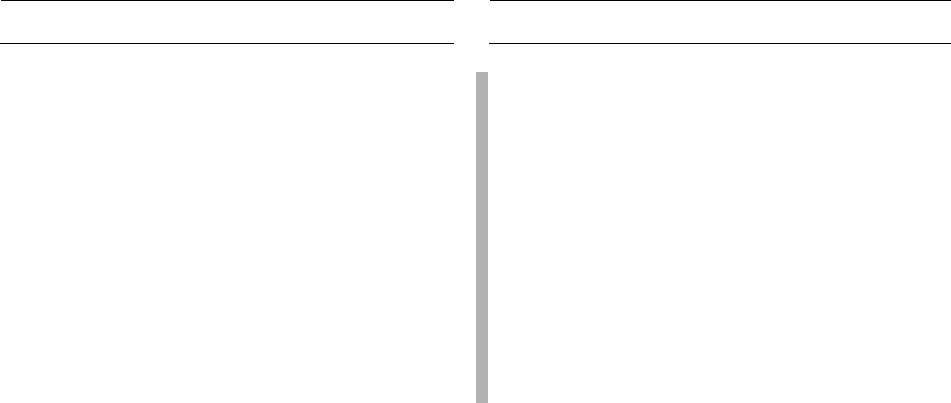
TANF TANF TANF TANF TANF TANF
SNAP SNAP SNAP SNAP SNAP SNAP
A-757.5.1 Division of Welfare and Supportive Services
INCOME Eligibility and Payments Manual
Noncommercial Roomer/Boarder Payments 15 May 01 MTL 01/15
● two-thirds of a full allotment
for the number of boarders
(average of two meals a day
or less), or
● the actual cost of providing
room and meals if the actual
costs exceed the monthly
SNAP allotment for the
number of boarders.
Note: Identify and verify each expense
when using actual costs.
757.6 Verification of Self-Employment Income
All self-employment income and expenses must be verified. It is the client’s
responsibility to provide proof of all income and expenses claimed. Use one of the
following documents to determine income received and expenses paid.
● Most recent year’s income tax return listing the current self-employment
business; or
● Business records/ledgers listing specific income received (from whom, purpose
and date) and expenses paid (to whom, purpose, and date.) Proof of all entries
must be provided; or
● Form 2011-EG, Self-Employment Worksheet, completed and signed by the
individual. Proof of all income received and expenses paid must be attached to
the worksheet. If the individual provides a service (i.e. laborer, manicurists,
beauticians, handyman) to other people in the income verification must include a
listing of the clientele including name, telephone number, date of service and
value of service. If the individual works on a commission basis (i.e. Tupperware,
Avon, Mary Kay) the individual should submit a copy of the invoices provided by
these companies showing cost of product and profit to the seller. If all other
avenues of verification have been exhausted, a written statement may be
accepted from the client regarding income received.
Note: When calculating monthly self-employment income either from business
records/ledgers or Form 2011-EG, the net monthly self-employment income
must be calculated using actual income received and expenses actually paid
in that month. An expense claimed for the cost of inventory is only allowed in
the month the inventory was actually purchased not in the month the
inventory was used or sold.

TANF TANF TANF TANF TANF TANF
SNAP SNAP SNAP SNAP SNAP SNAP
A-757.7 Division of Welfare and Supportive Services
INCOME Eligibility and Payments Manual
Documentation Requirements 13 Nov 01 MTL 13/05
757.7 Documentation Requirements
Document
● the method used to calculate budgetable self-employment income,
● deductions for the costs of doing business,
● the number of hours engaged in the enterprise, and
● other factors used to determine the amount of income.
758 Strikers
A striker is anyone who participates with one or more other employees in a work slow-
down or stoppage. This includes a stoppage resulting from the expiration of a collective
bargaining agreement. Individuals affected by a lock-out are not strikers. If
circumstances deteriorate during the strike to the extent the individual loses his job
(e.g., the company is forced out of business, permanent replacements are hired by the
company, etc.), the individual will not be considered a striker.
758.1 Eligibility of Strikers
The entire assistance unit is ineligible for
TANF for any month in which the
caretaker is participating in a strike on
the last day of that month.
When a member of the assistance unit
other than the natural/adoptive parent is
participating in a strike on the last day of
a month, that person is ineligible for
assistance for that month and their
needs are excluded from the benefit
grant. An overpayment is calculated
when applicable.
Note: When an individual begins
striking, assume they will be on strike on
the last day of the month, and terminate
or reduce benefits. If it is determined
they will not be on strike the last day of
the month, benefits continue.
A household with a striker is ineligible for
SNAP unless the household
was eligible the day prior to the
strike and
is still eligible.
Pre-Strike Eligibility
Use the income of all household members
(including the striker) as of the day before
the strike. If the household is ineligible,
deny/terminate the household.
If the household was eligible before the
strike, compute current eligibility. Note:
Eligible striker households will not receive
an increased allotment as a result of a
decrease in the household’s income due
to the strike.
Current Eligibility
1. Calculate the striker’s income for 30
days prior to the day the strike
began.

TANF TANF TANF TANF TANF TANF
SNAP SNAP SNAP SNAP SNAP SNAP
Division of Welfare and Supportive Services A-758.1
Eligibility and Payments Manual INCOME
15 May 01 MTL 01/15 Eligibility of Strikers
2. Compare the striker’s income in 1)
above to the striker’s current
income (including union benefits
and part-time jobs). Determine the
higher of the two incomes.
3. Add the higher of two incomes (pre-
strike and current) to the remaining
household member’s current
income.
If the household is not currently eligible,
deny/terminate the household benefits.
If the household is eligible based on both
current and pre-strike income, the
household is eligible if it meets all other
criteria. Consider other eligibility criteria
the same as income. The household must
be eligible both currently and before the
strike.
Exception: Individuals exempt from work
registration for reasons other than
employment are not considered strikers.
759 Temporary or Ongoing Assistance From Other
Agencies/Organizations
Temporary or ongoing assistance from other agencies/organizations, such as General
Assistance (GA), Indian General Assistance (IGA), Interim Assistance (IA) for pending
SSI recipients, is budgeted as unearned income unless excluded by another policy.
Assistance from other agencies and
organizations except out-of-state TANF
which equals the difference between the
payment allowance and the 100% need
standard amount is excluded as income.
The portion of the payment that exceeds
the difference between the payment
level and the need standard is
budgeted as unearned income when
the assistance is for:
items not included in the need
standard, OR
the assistance supplements the
need standard.
Budget the entire payment as unearned
income unless it must be repaid to the
issuing agency (e.g., county requires a
recipient to sign a contractual agreement
to repay Interim Assistance (IA) once
approved for SSI and/or RSDI or program
benefits).

TANF TANF TANF TANF TANF TANF
SNAP SNAP SNAP SNAP SNAP SNAP
A-760 Division of Welfare and Supportive Services
INCOME Eligibility and Payments Manual
ADDITIONAL TYPES OF INCOME-PART IV 15 May 01 MTL 01/15
760 ADDITIONAL TYPES OF INCOME – PART IV
761 Third-Party Beneficiary
Do not count money a household receives that is intended and used for maintenance of
a non-assistance unit/household member.
If a single payment is received for more than one beneficiary, exclude the amount
actually used for the nonmember up to the nonmember's
● identifiable portion, or
● prorated portion (if the portion is not identifiable).
Count as unearned income any money the beneficiary retains and does not use for the
maintenance of a nonmember.
762 Trust Funds
Count as unearned income, withdrawals or dividends the household can receive from a
trust fund that is exempt as a resource. Note: ALL trusts, including living trusts, are
submitted to the Deputy Attorney General (DAG) for review and a determination of
availability/accessibility excluding the trust situations noted in manual section A-500,
Trust Referrals; however, if the person is currently receiving income from the trust, it is
countable (this includes income from a Supported Living Arrangement trust fund).
763 Unemployment Insurance Benefits
Count as unearned income the gross benefit less any amount being recouped for a
previous UIB overpayment. Note: Child support judgments against UIB payments are
not considered an overpayment recoupment.
Exception: If the overpayment was
incurred due to fraud, the amount being
recouped is not deducted from the gross
payment.
In some circumstances, individuals have earnings which do not exceed the payment
amount of their weekly UIB benefit. The gross UIB benefit is reduced by 75% of the
amount of the earnings as reported by the individual to DETR.
Example: The individual is entitled to $200 per week gross UIB benefits and reports
$100 in weekly earnings to DETR. When determining the UIB payment, 75% of the
$100 or $75 will be budgeted against the benefit of $200, reducing the gross payment to
$125. $100 x 75% = $75, $200 - $75 = $125.

TANF TANF TANF TANF TANF TANF
SNAP SNAP SNAP SNAP SNAP SNAP
Division of Welfare and Supportive Services A-764
Eligibility and Payments Manual INCOME
15 May 01 MTL 01/15 Vendor Payments
764 Vendor Payments
Do not count payments a person or organization outside the household makes directly
to the household’s creditor or person providing the service.
Exception: Count as income money
legally obligated to the household, but
which the payer makes or diverts to a third
party for a household expense. This
includes obligated court-ordered child
support payments that are diverted to a
third party for expenses, such as shelter.
764.1 Vendor Payments from State and Local Government Funds
Exempt:
vendor payments to a household
with a migrant farm worker in the
work stream that are paid with state
or local government funds.
third party vendor payments made
by a person or organization, other
than PA (Public Assistance) or GA
(General Assistance), on behalf of
a household using funds that are
not legally owed to the household.
This includes SLA vendor
payments.
Note: When a shelter expense, such as
rent, is vendor paid by GA or PA, count
the income as unearned income and
continue to allow the shelter expense
when determining benefits.
Count the vendor payments to other
people that are paid with state or local
government funds, unless the payment
provides assistance for
medical expenses
child care
expenses related to natural
disasters (example: fires or floods)
energy or utility expenses

TANF TANF TANF TANF TANF TANF
SNAP SNAP SNAP SNAP SNAP SNAP
A-764.1 Division of Welfare and Supportive Services
INCOME Eligibility and Payments Manual
Vendor Payments from State and Local Government Funds 15 May 01 MTL 01/15
765 Veteran's Benefits
Count as unearned income the gross benefit less any amount being recouped for a
previous overpayment.
Exception: Exempt the portion of VA educational benefits used for items such as
tuition, books, fees, equipment, child care necessary for school attendance, etc.
766 Miscellaneous Income
1. Blood Donations
Exempt
2. Jury Duty Payments
Exempt
3. Gambling Winnings
Exempt
Note: The receipt of a substantial jackpot must be evaluated as a resource and if
the winnings are placed in an interest bearing account the monthly interest
becomes countable income.
Exception: Gambling winnings are countable to the household if they claim to be
a professional gambler. Evaluate these winnings as self-employment income.
4. Panhandling or Income from Begging is exempt.
Note: Vendor payments paid with
federal funds (example: federally funded
housing assistance) are exempt.
